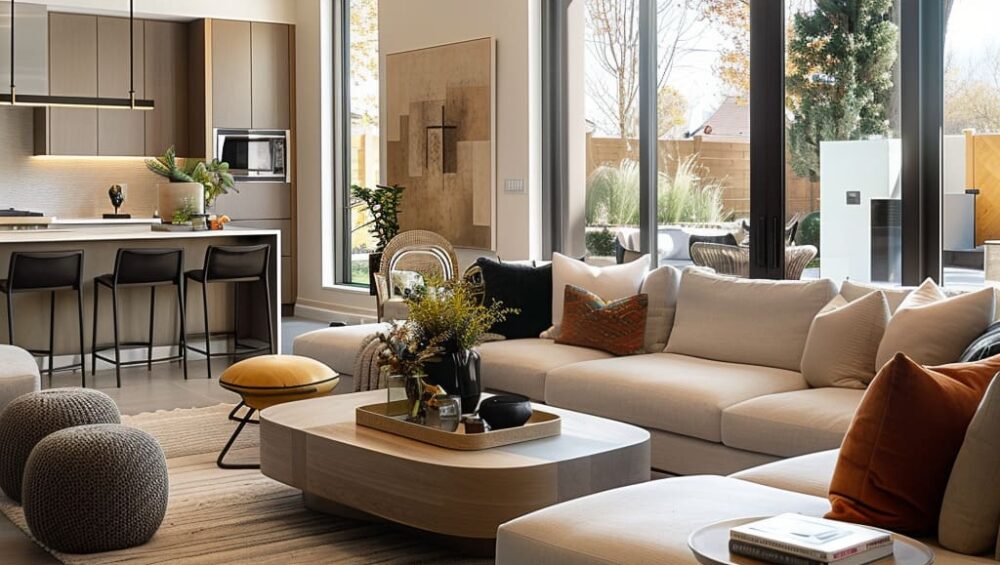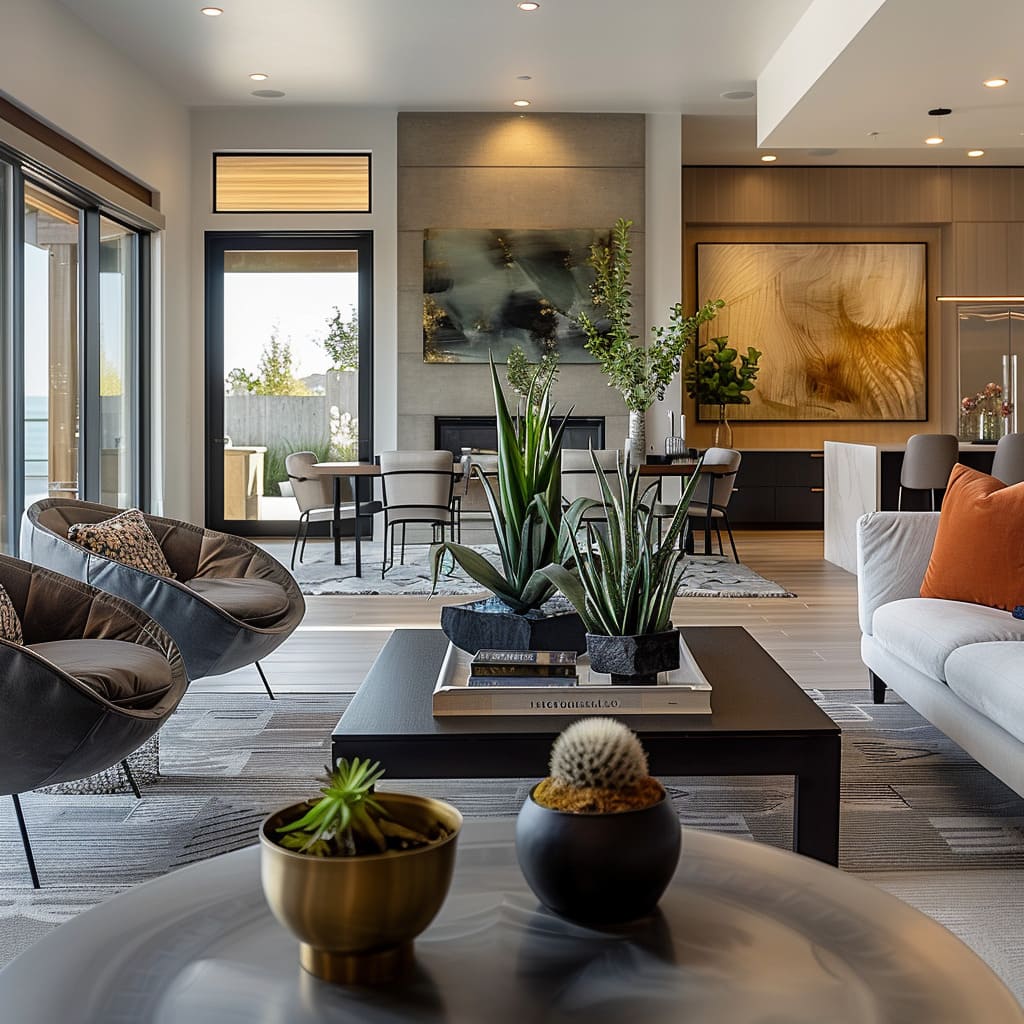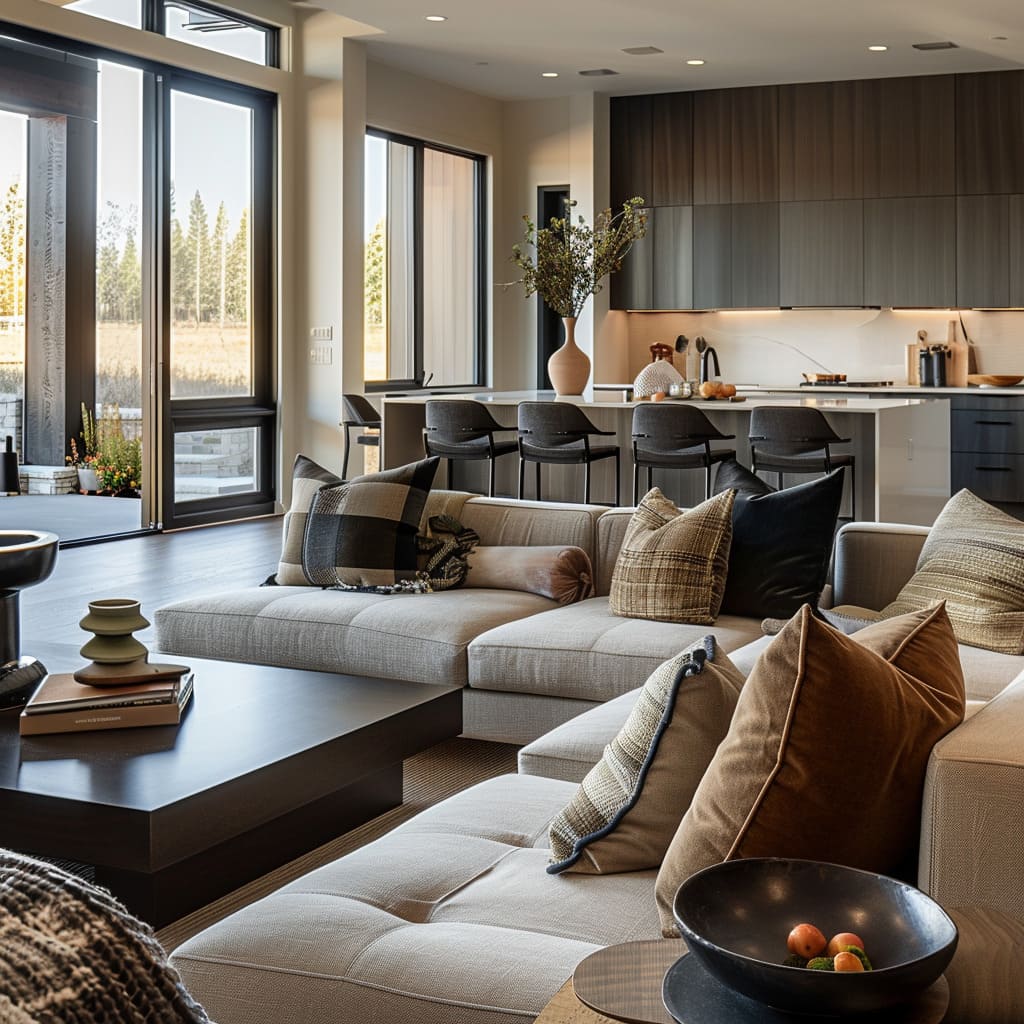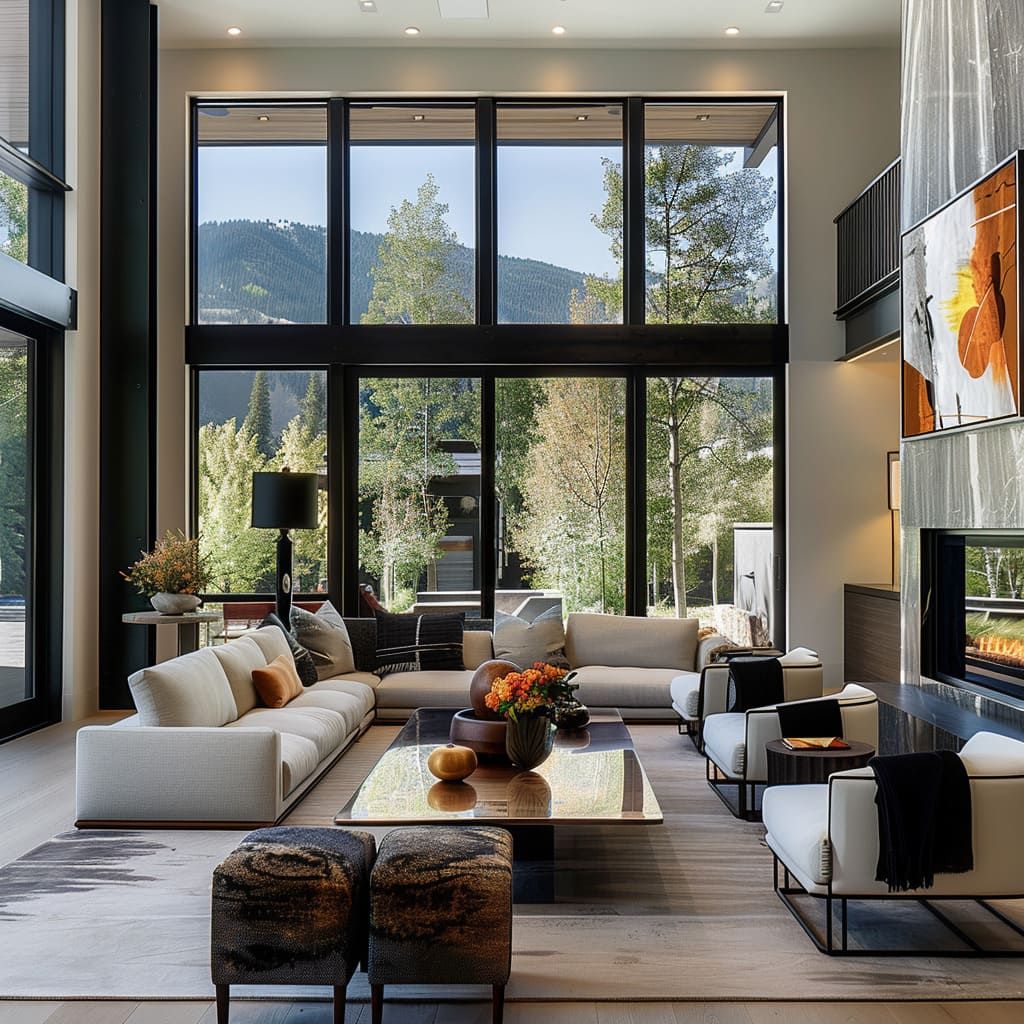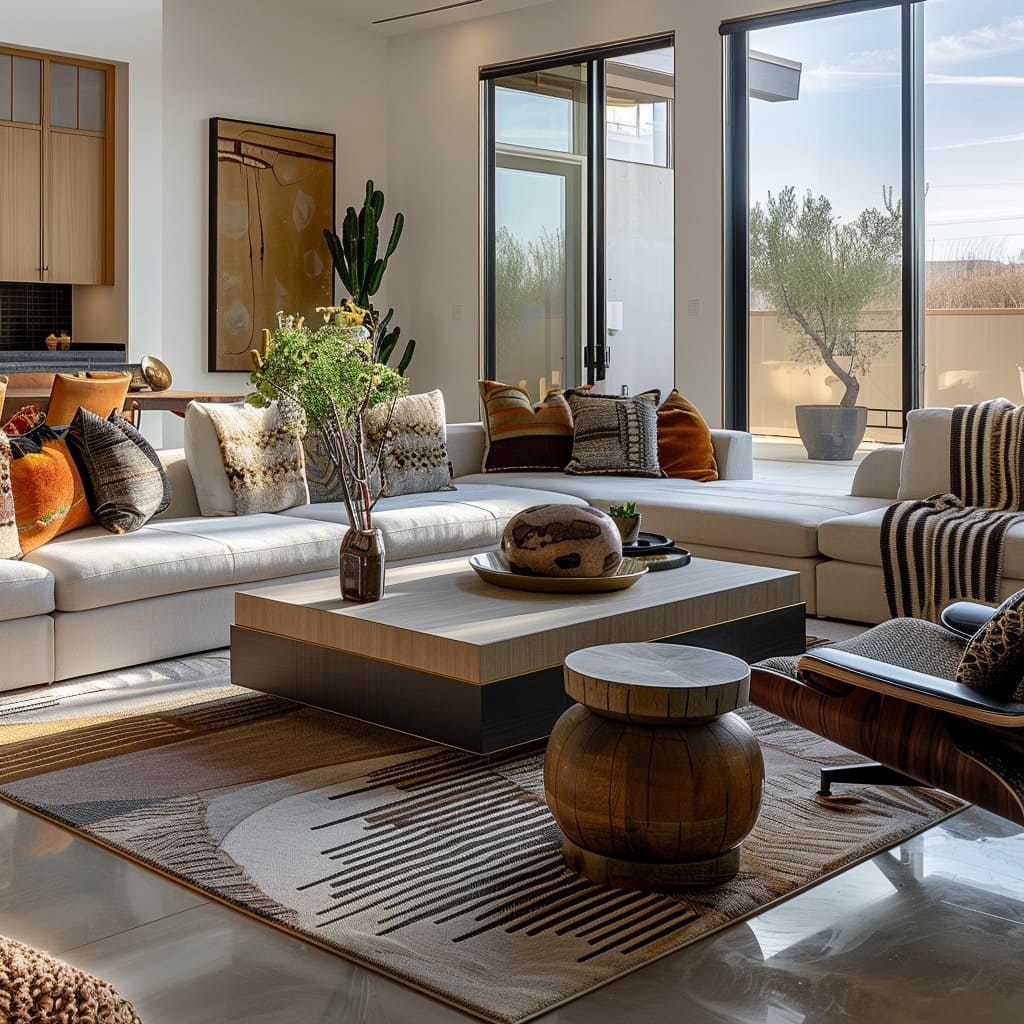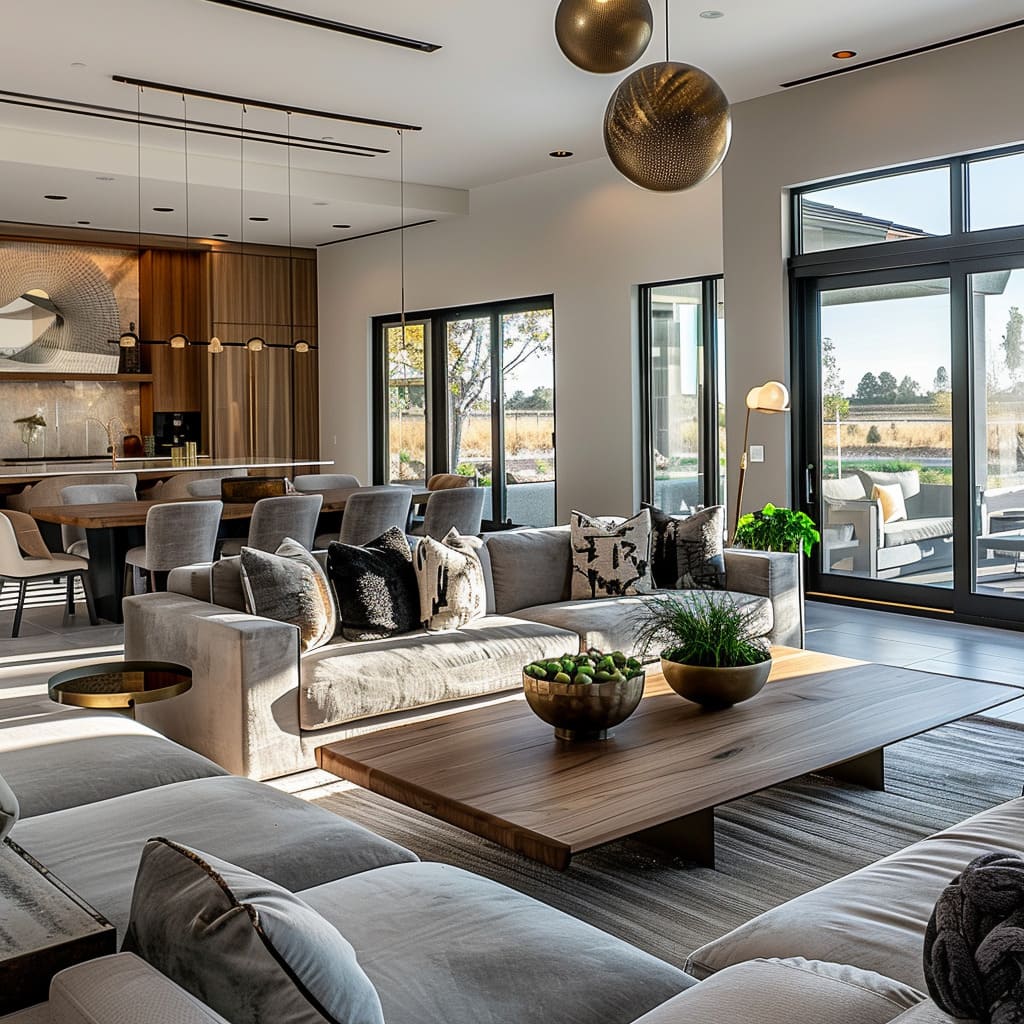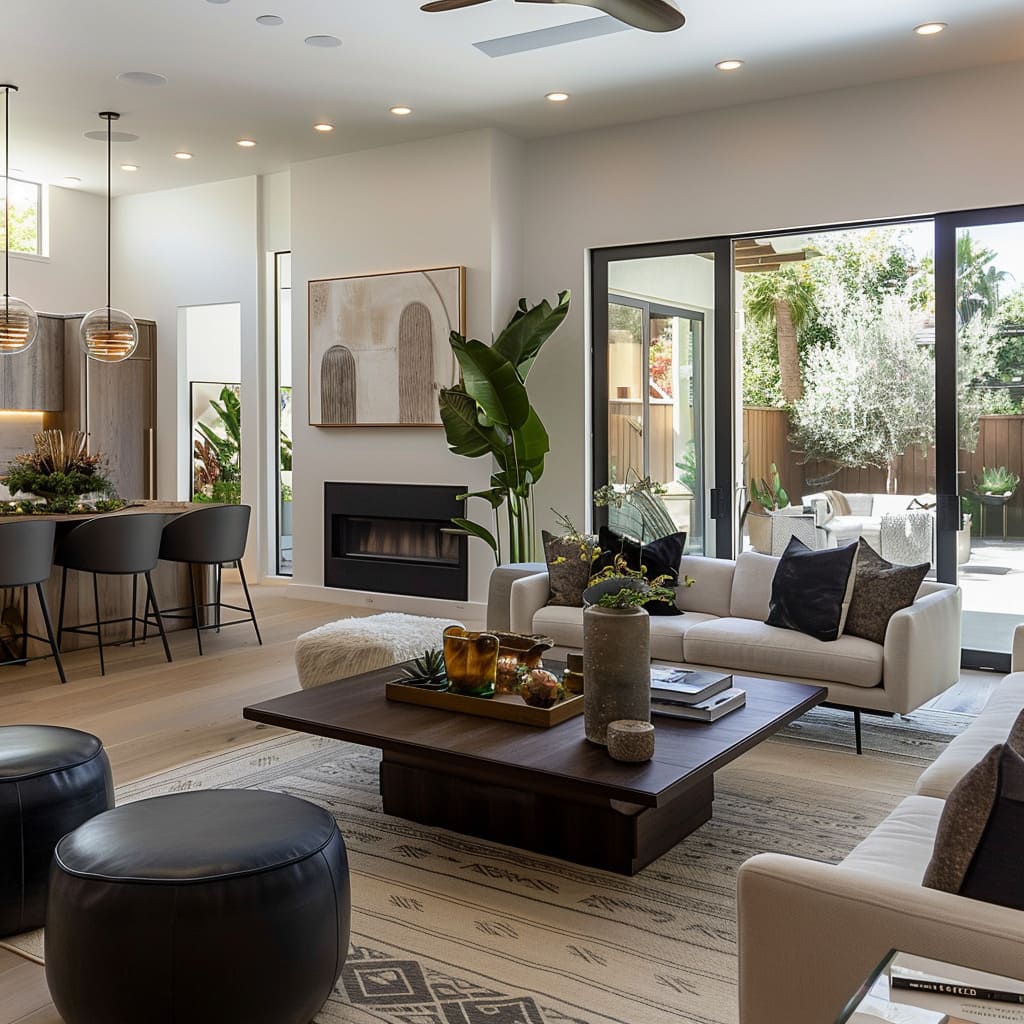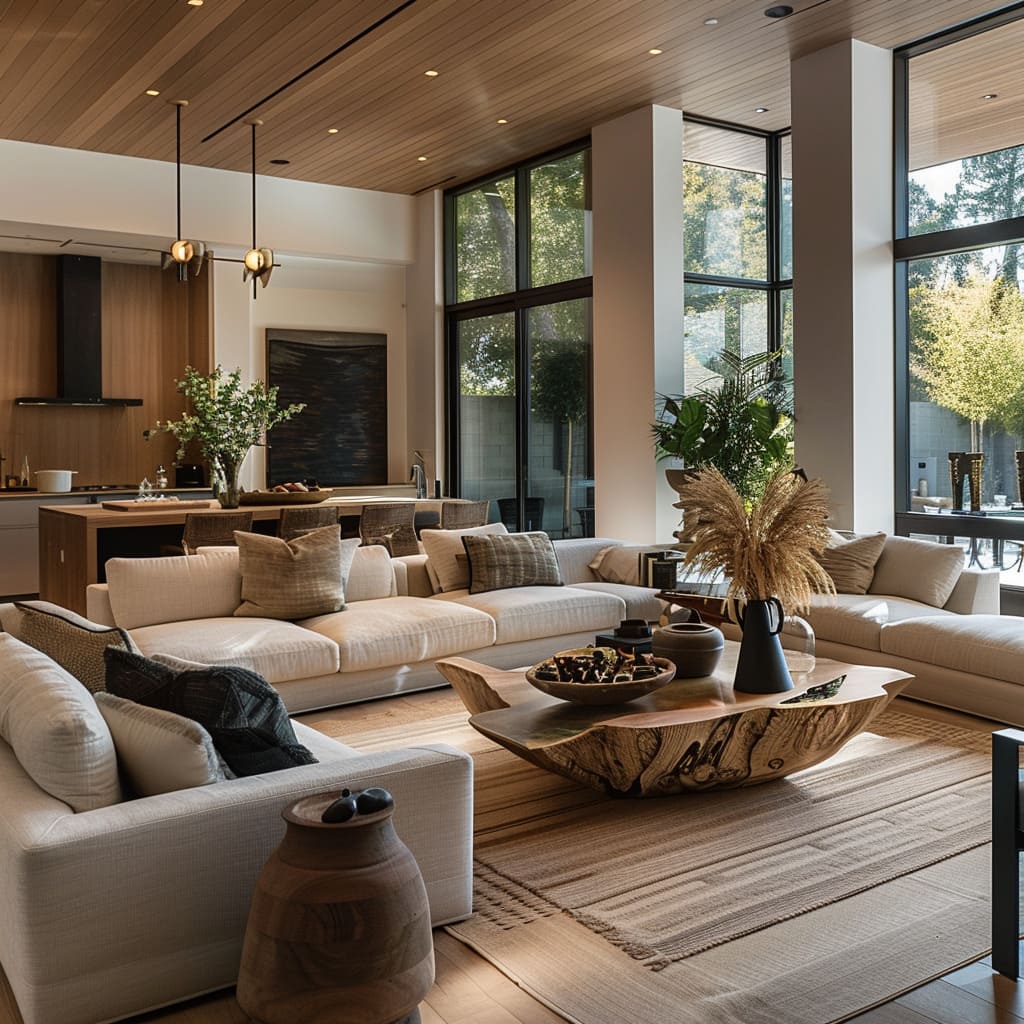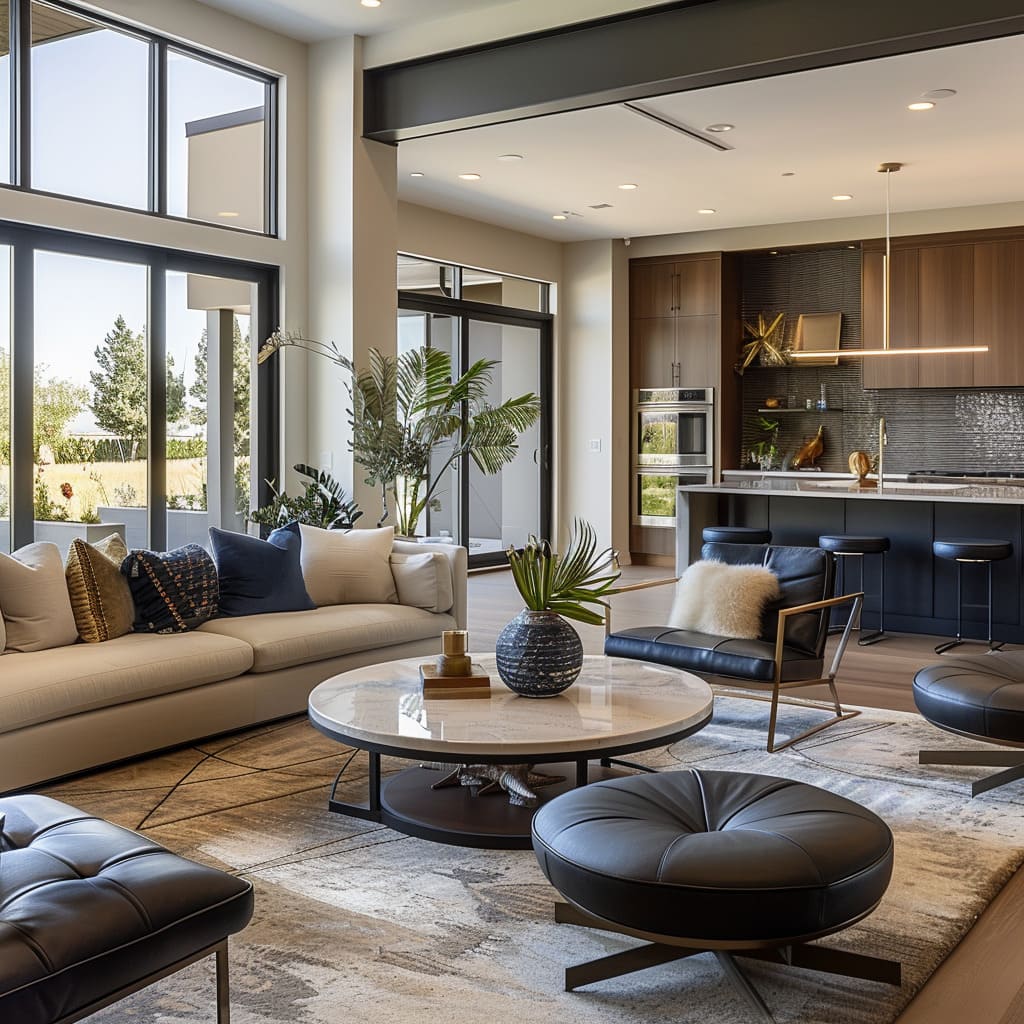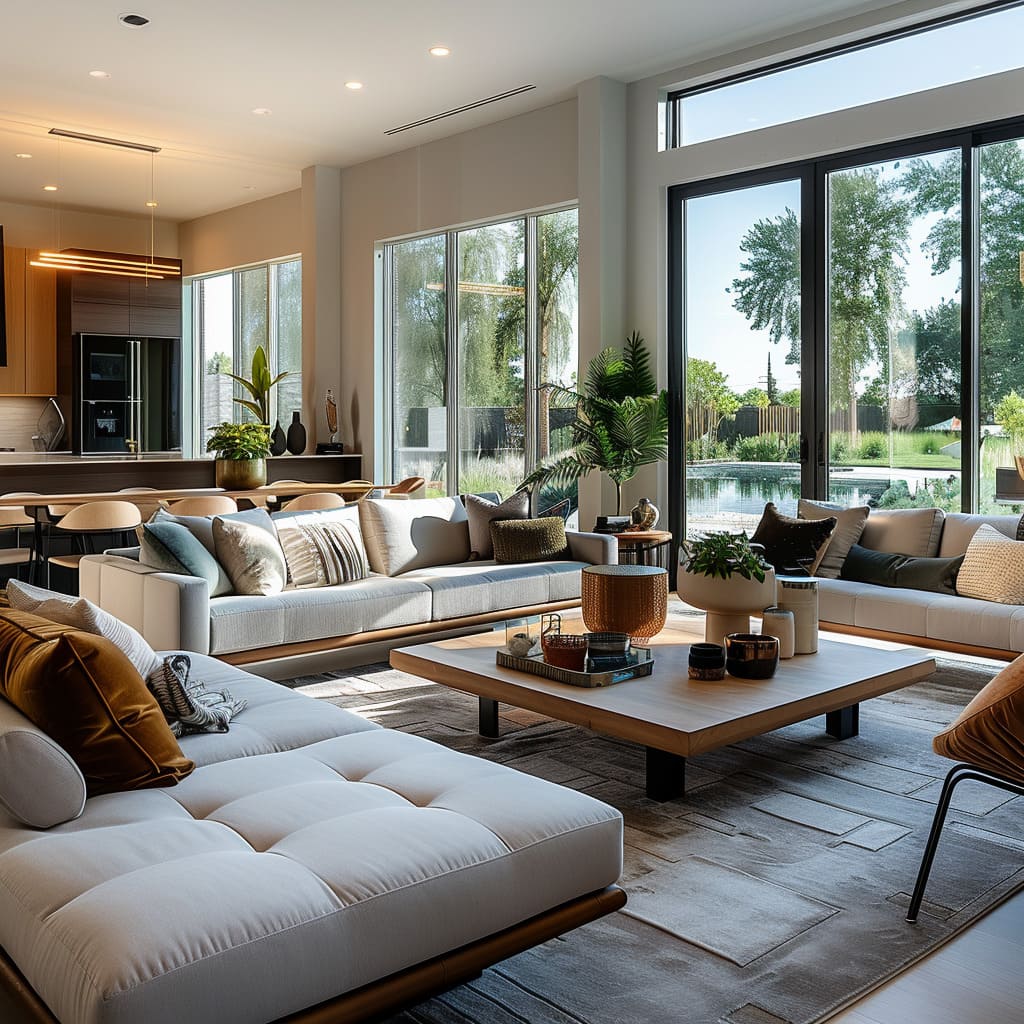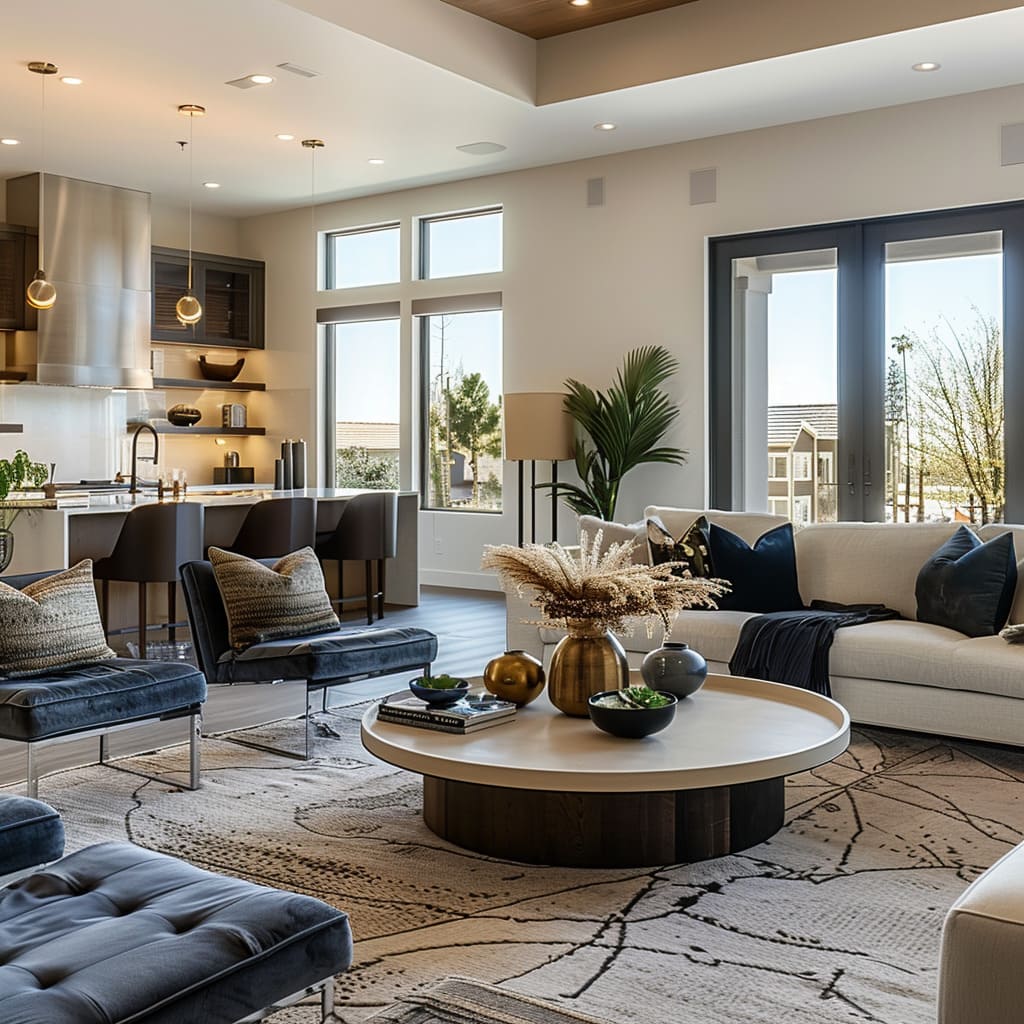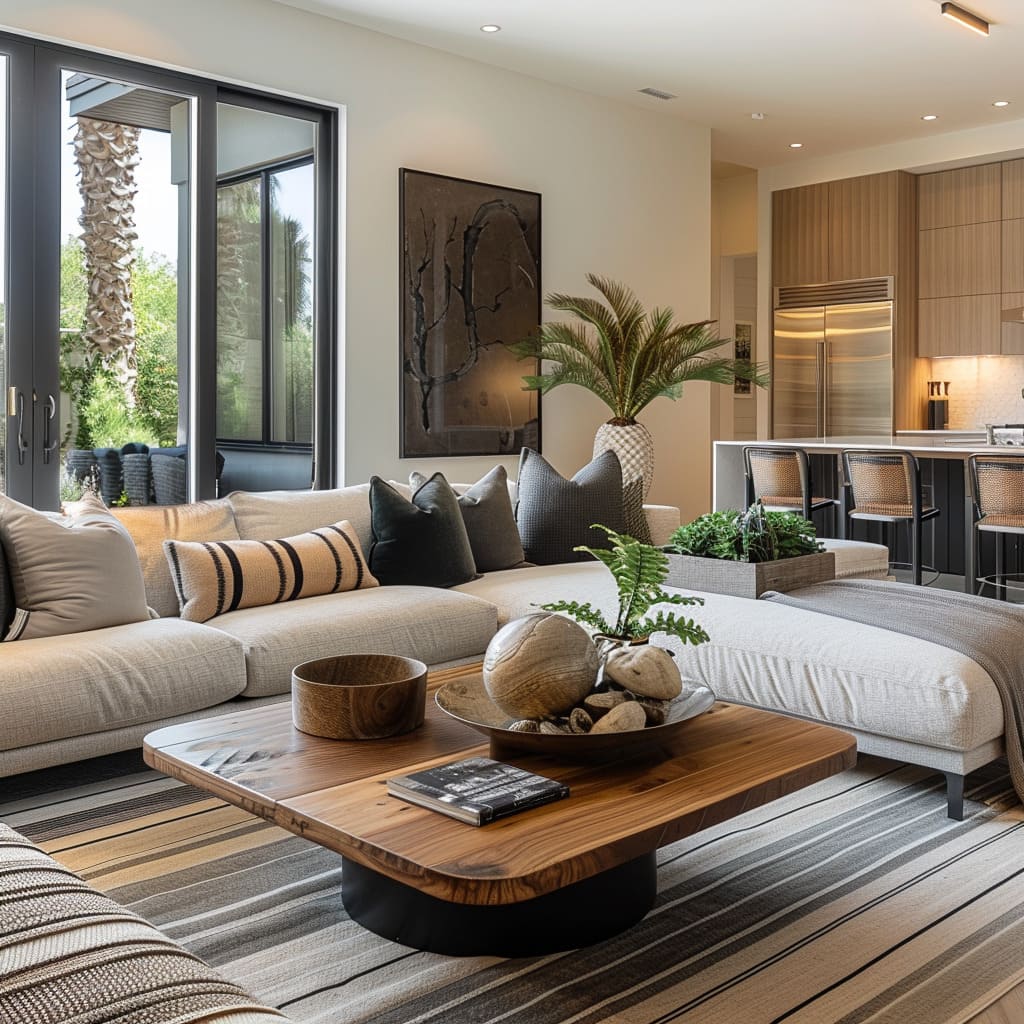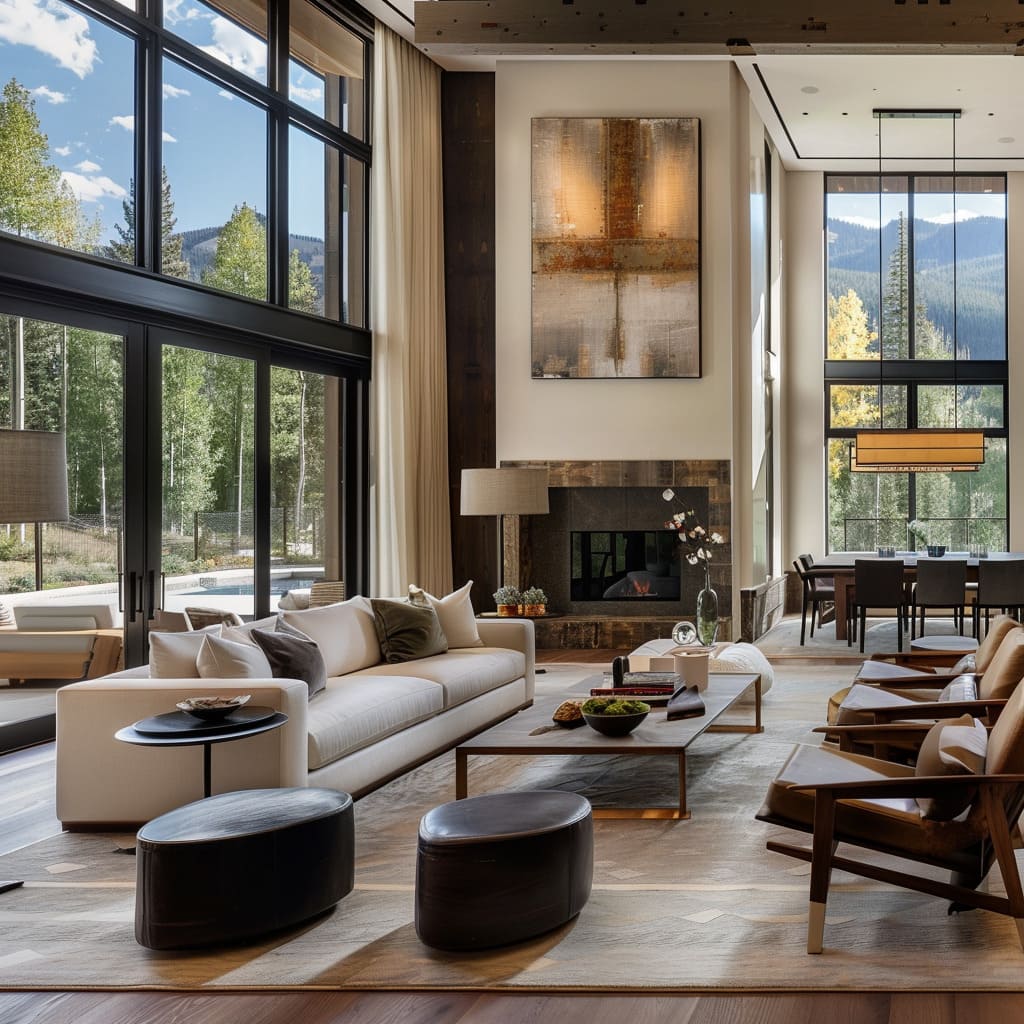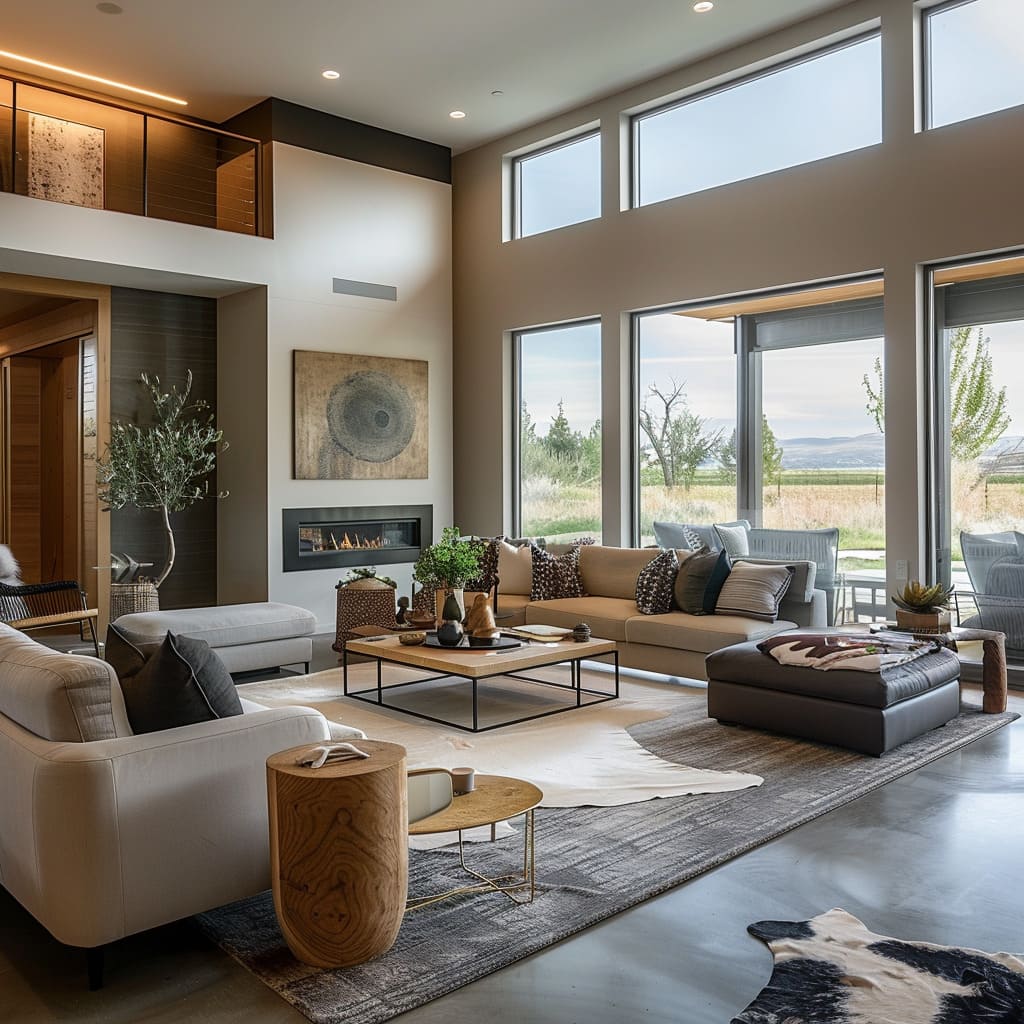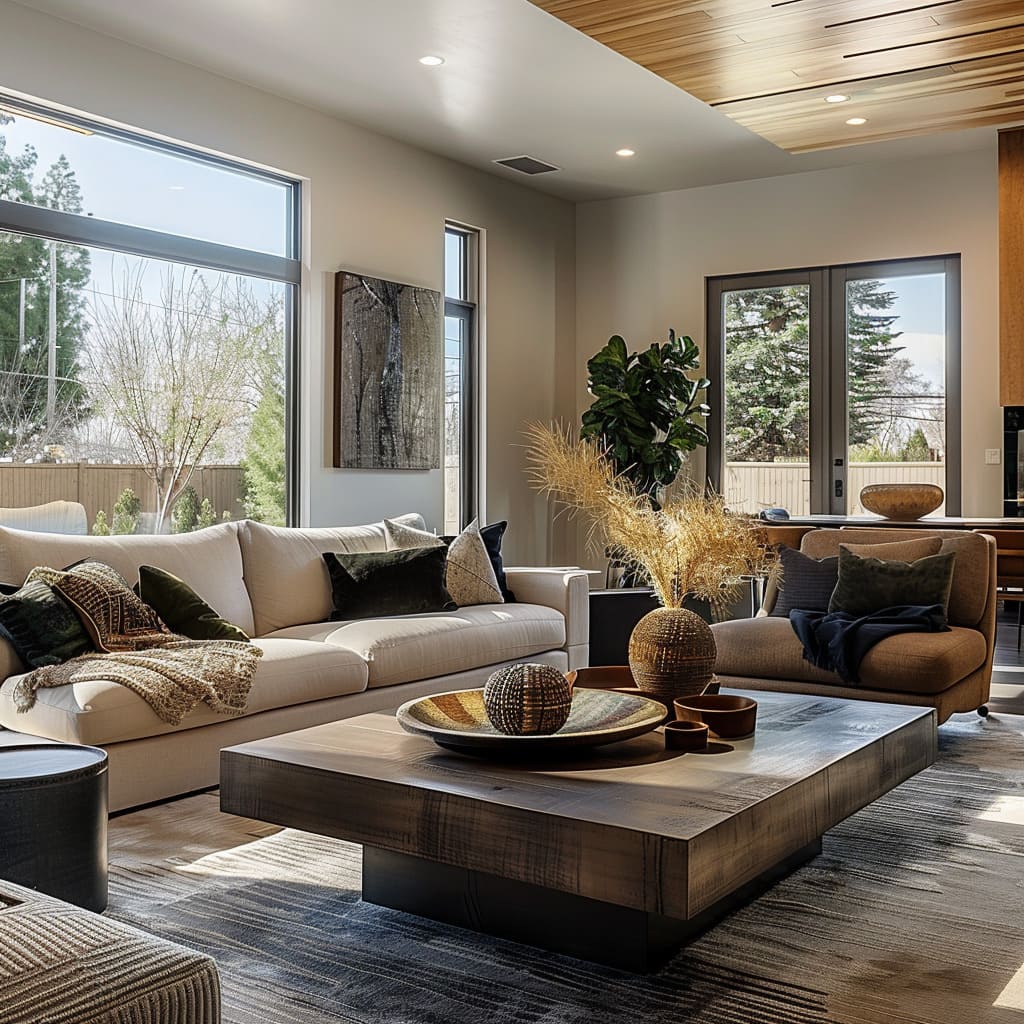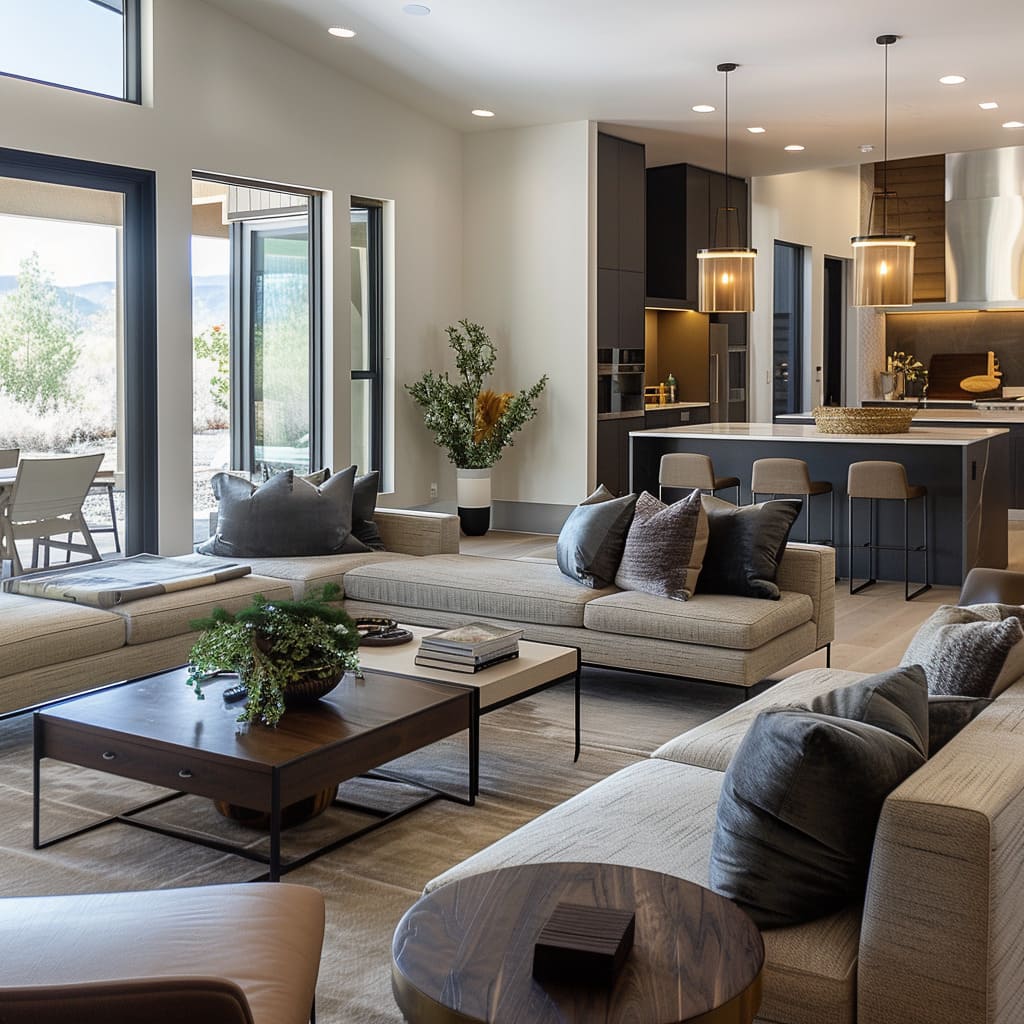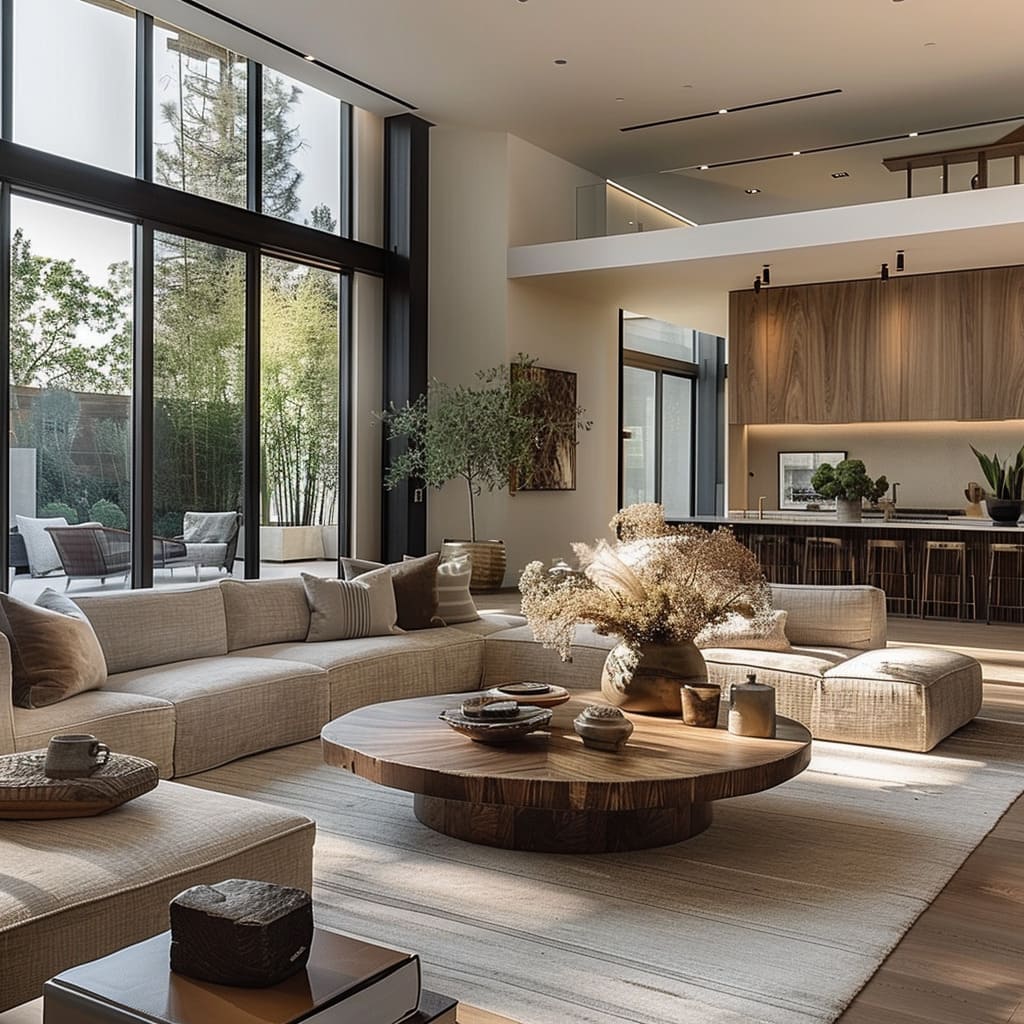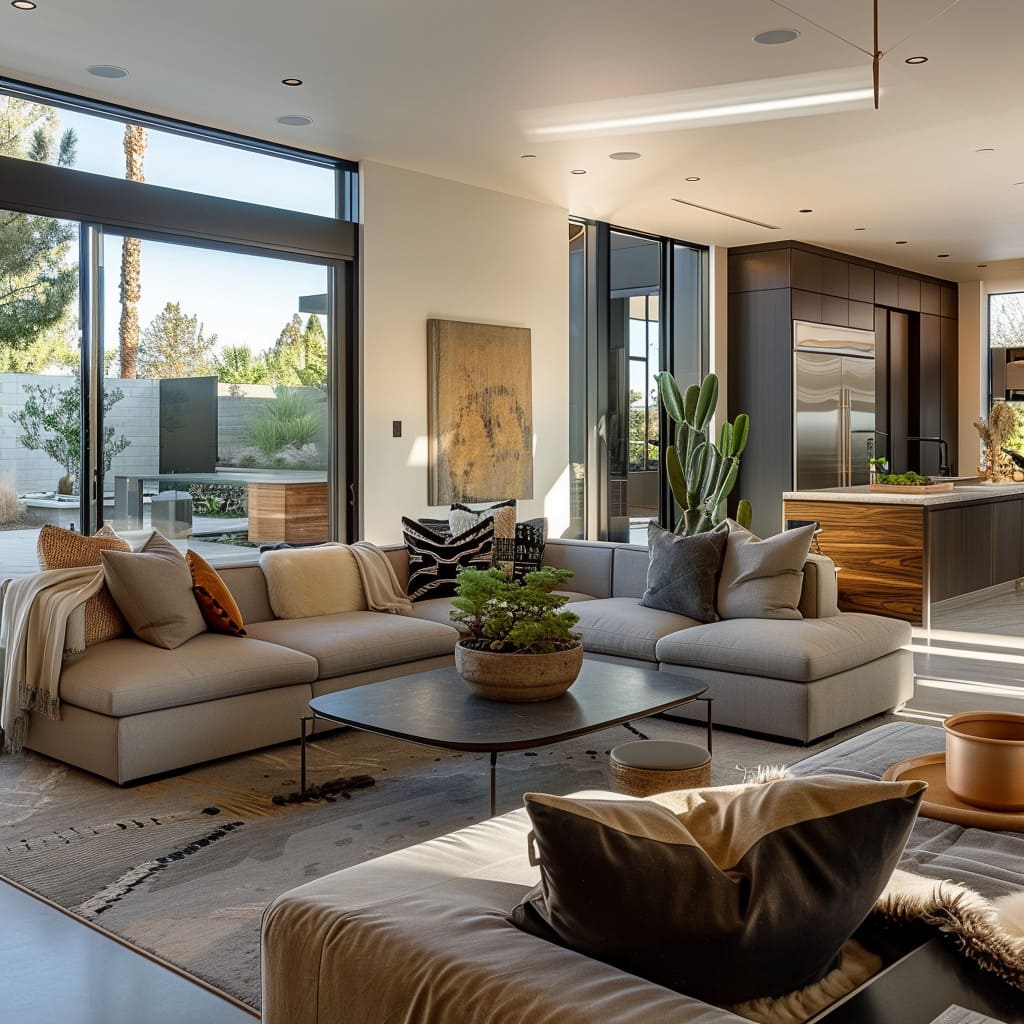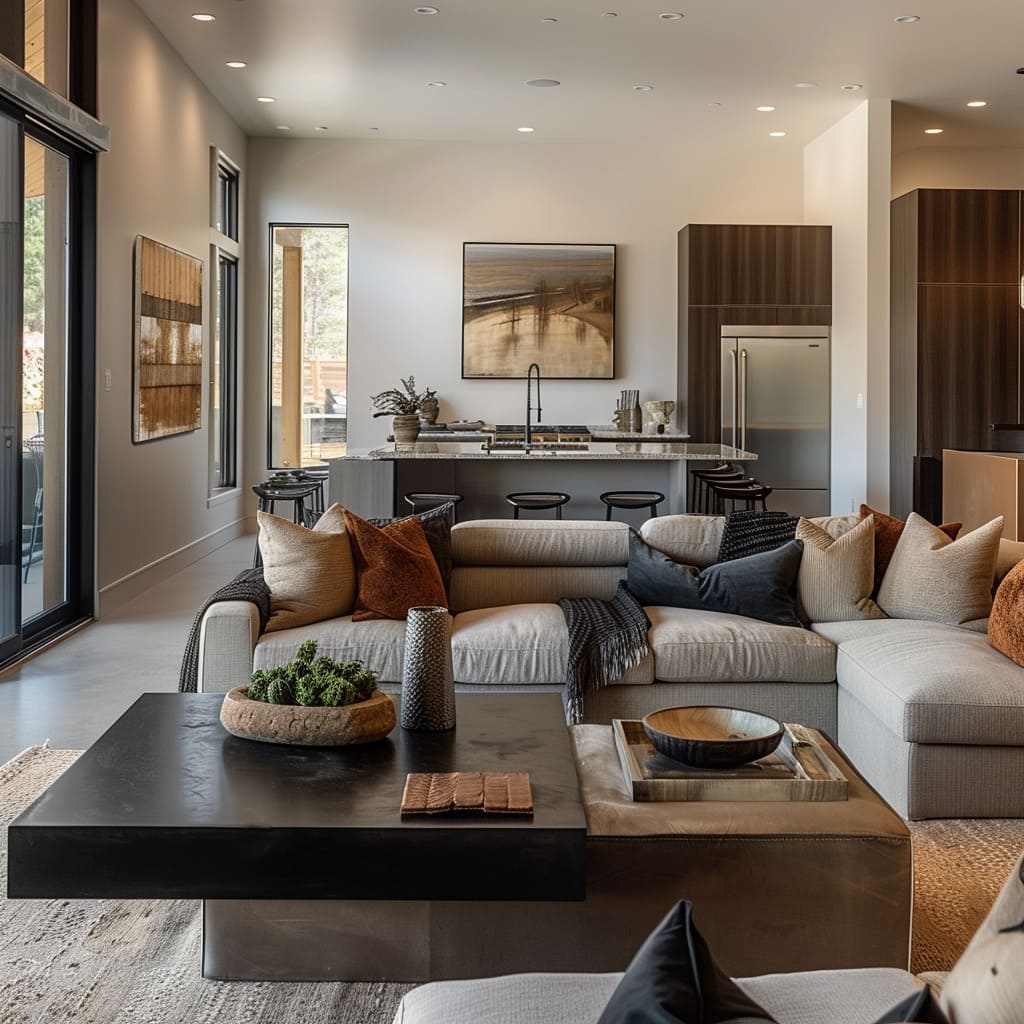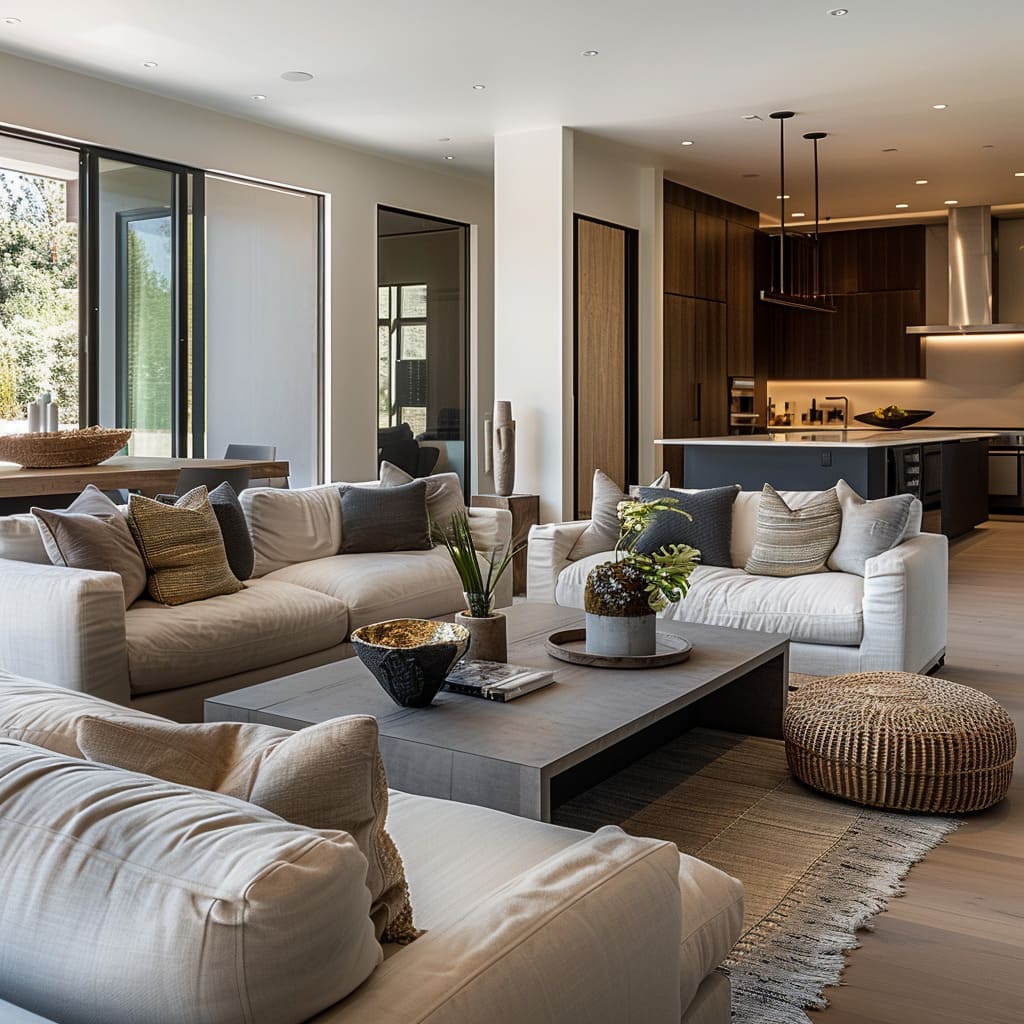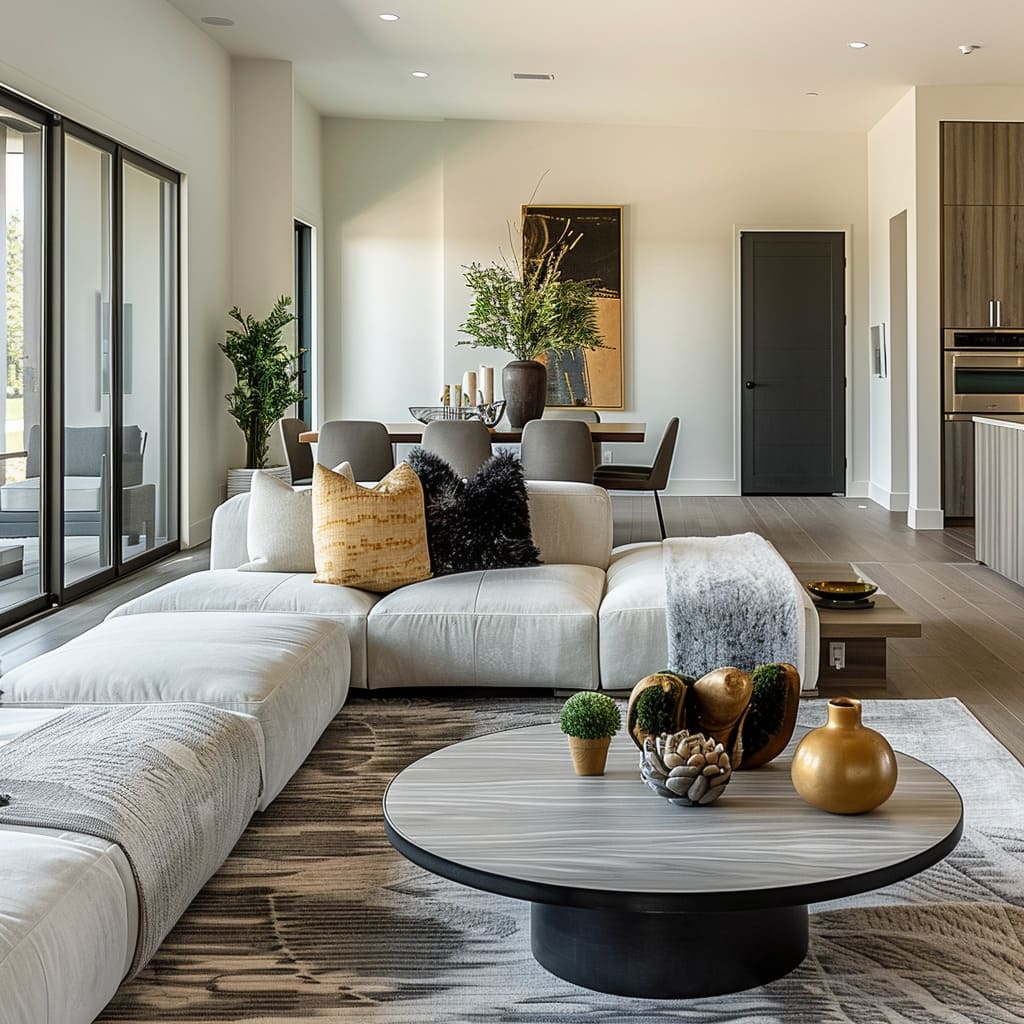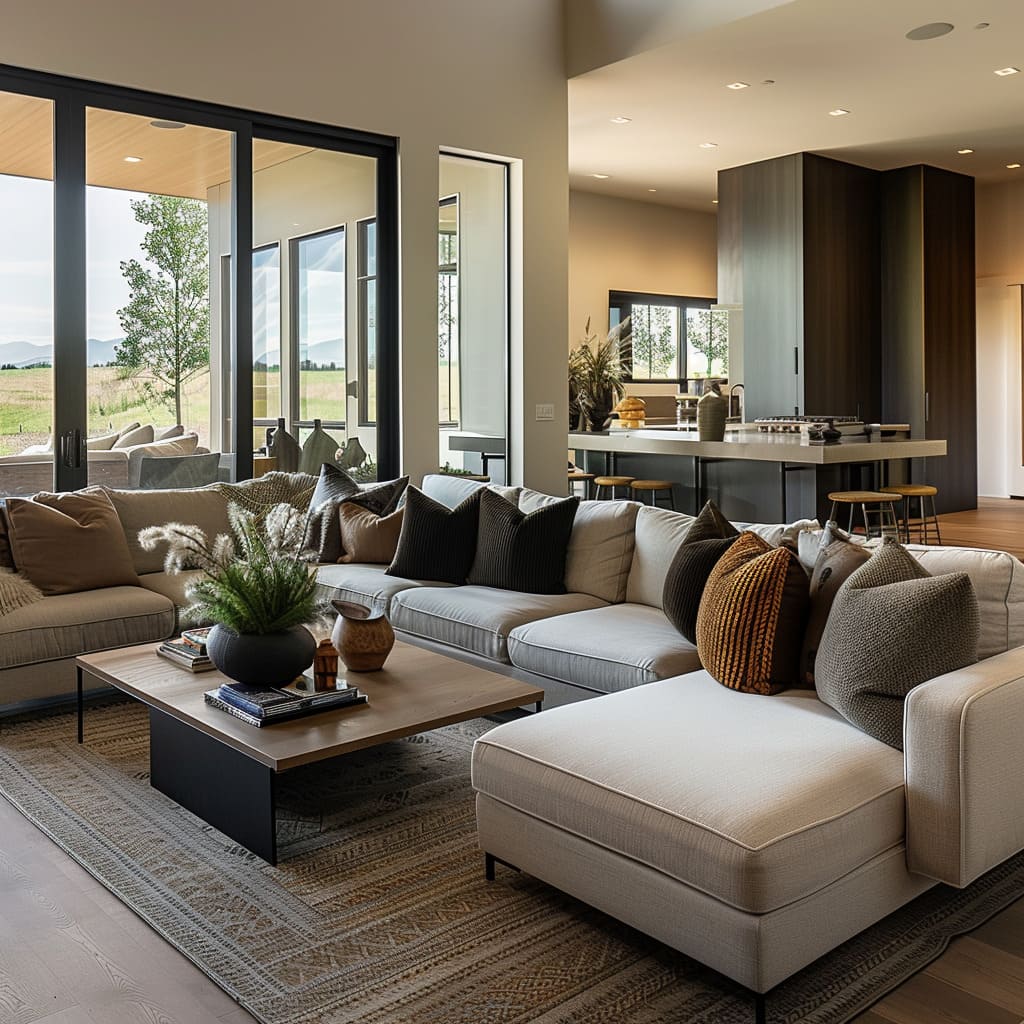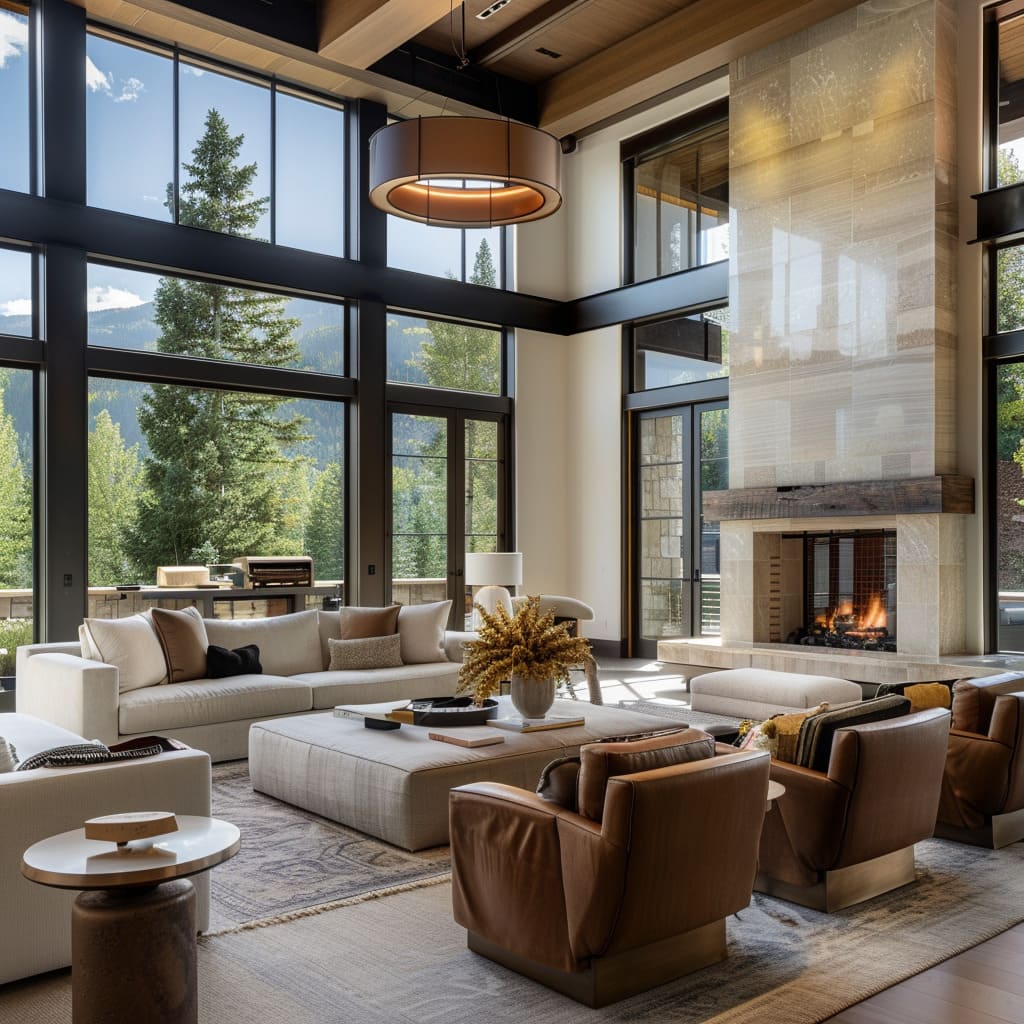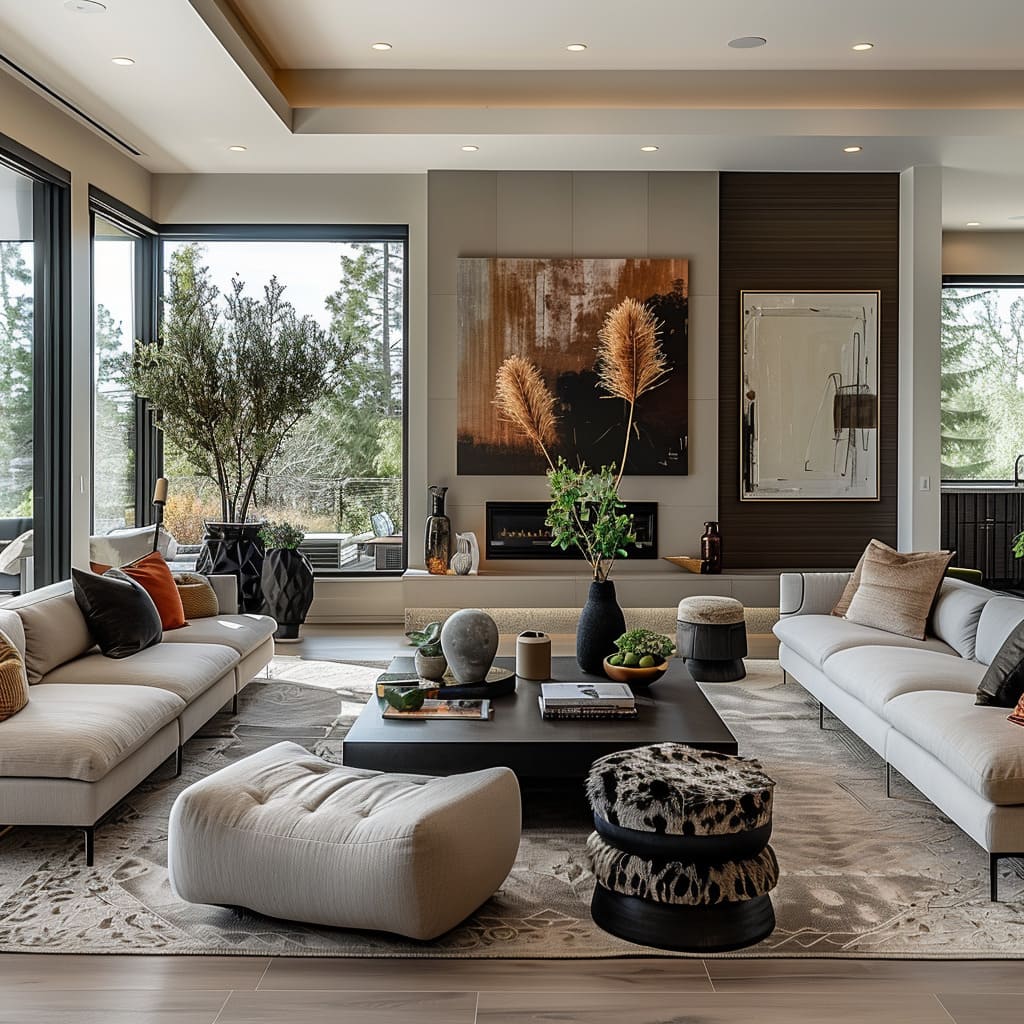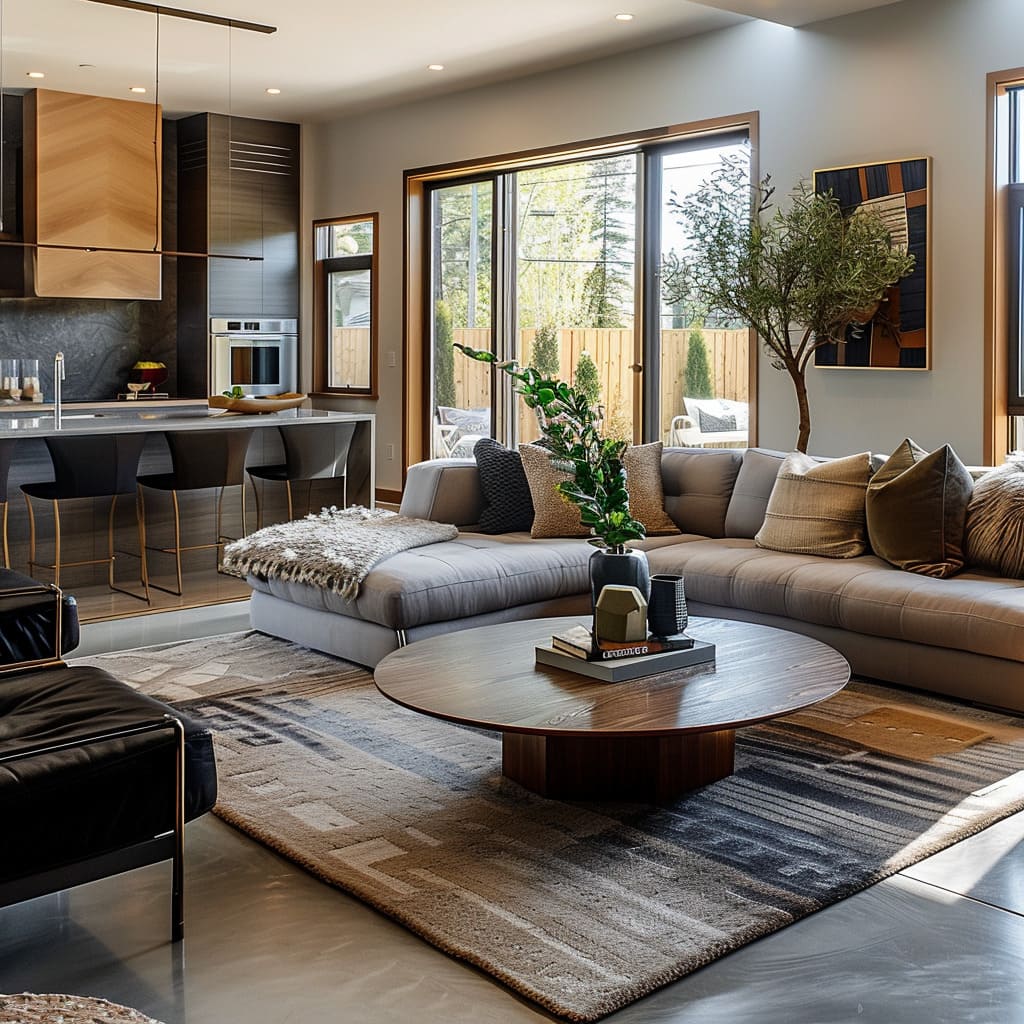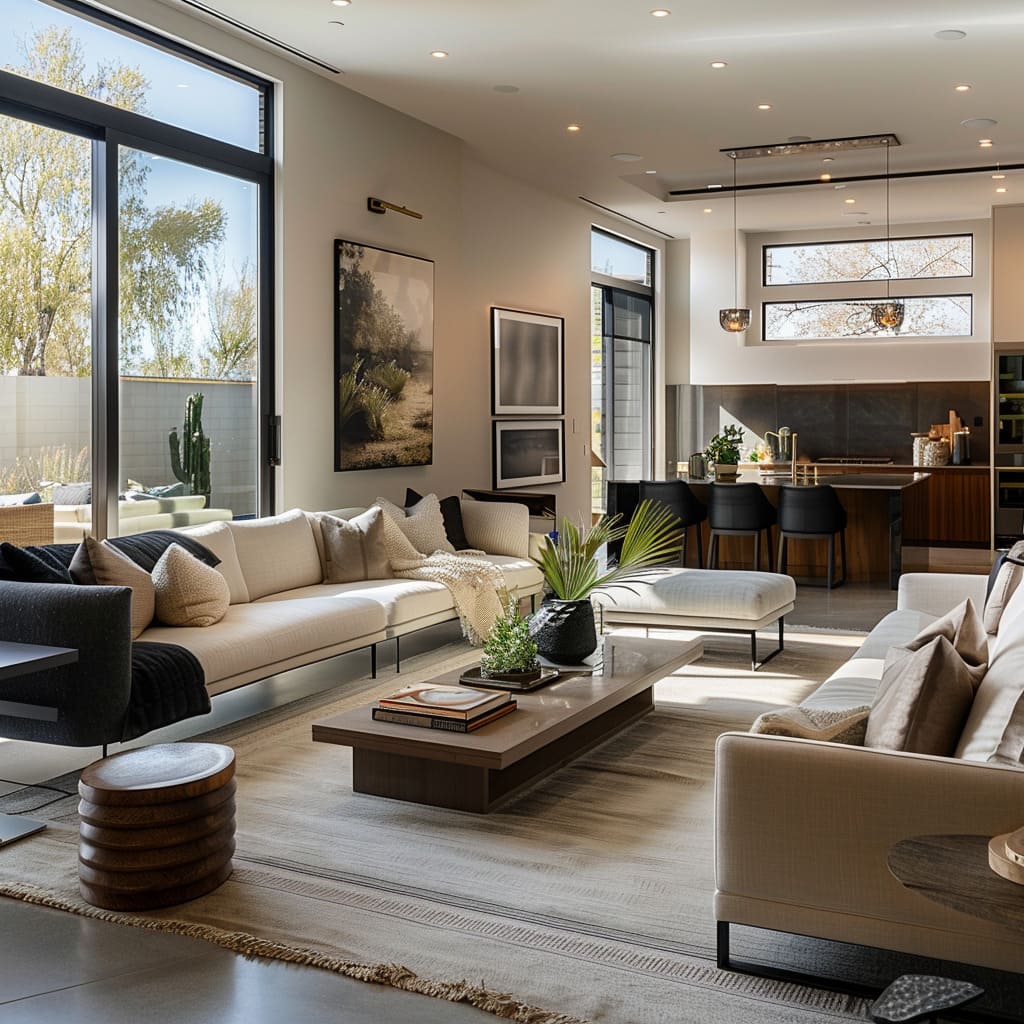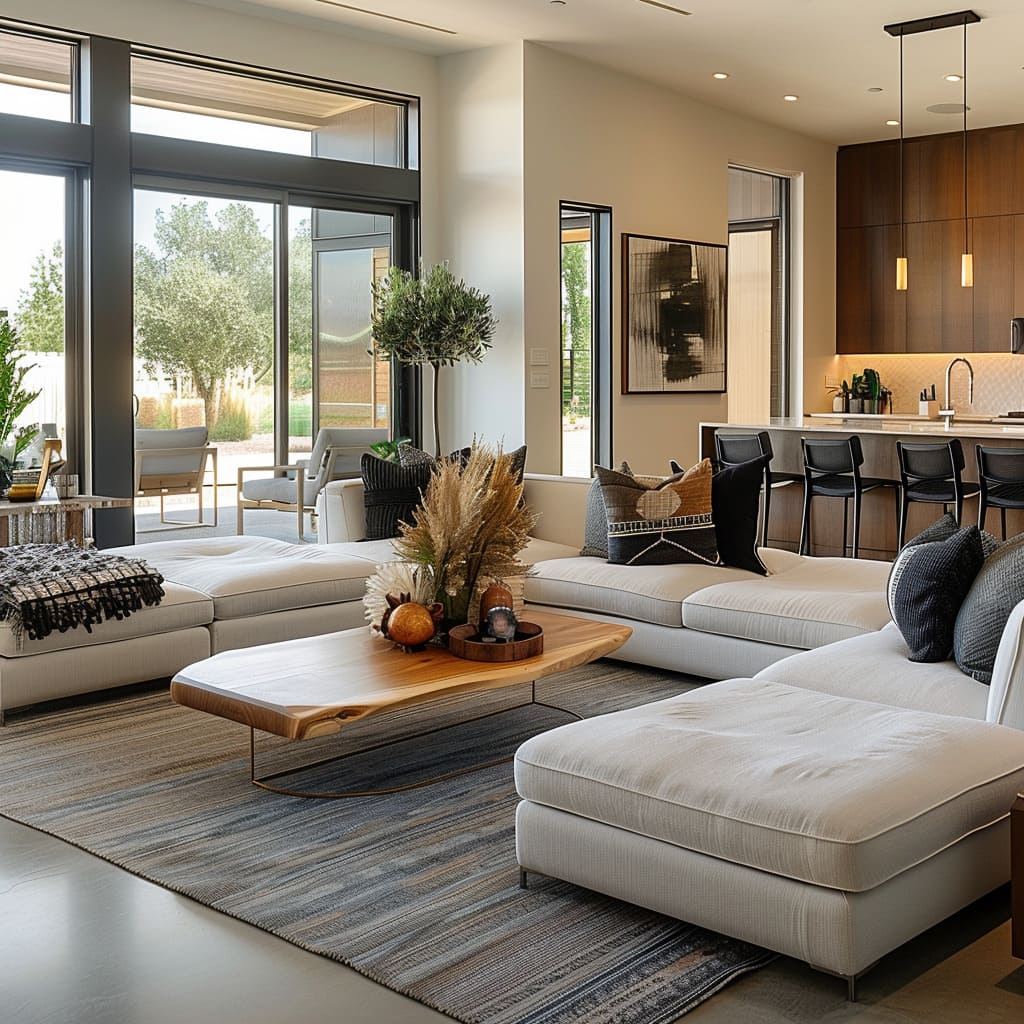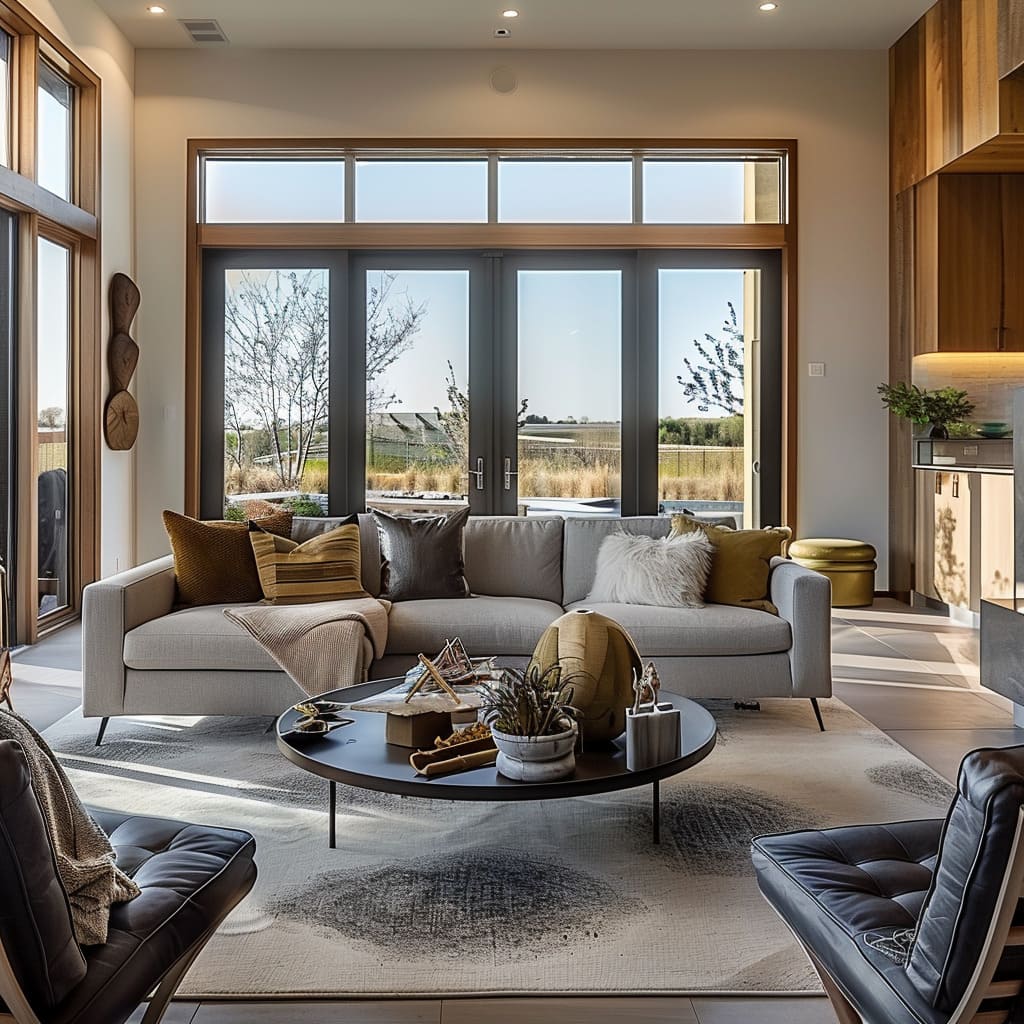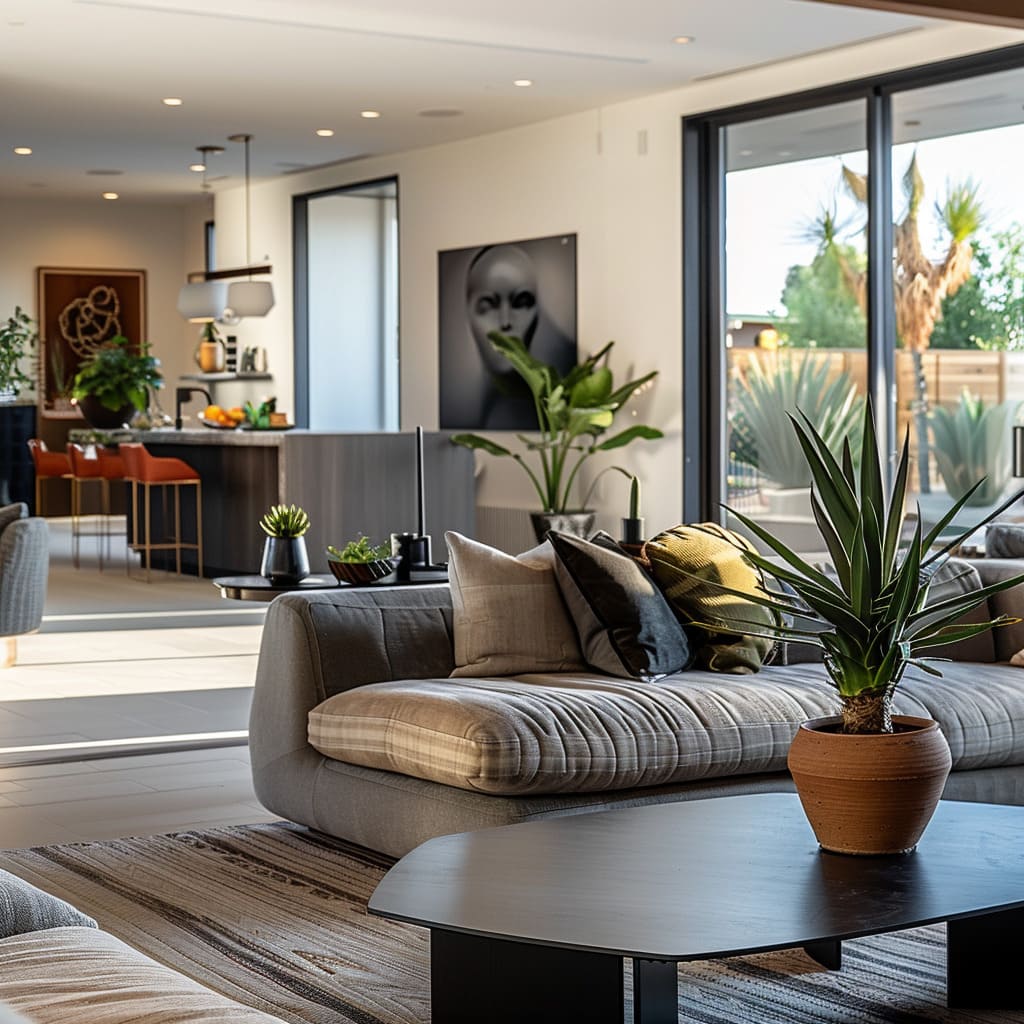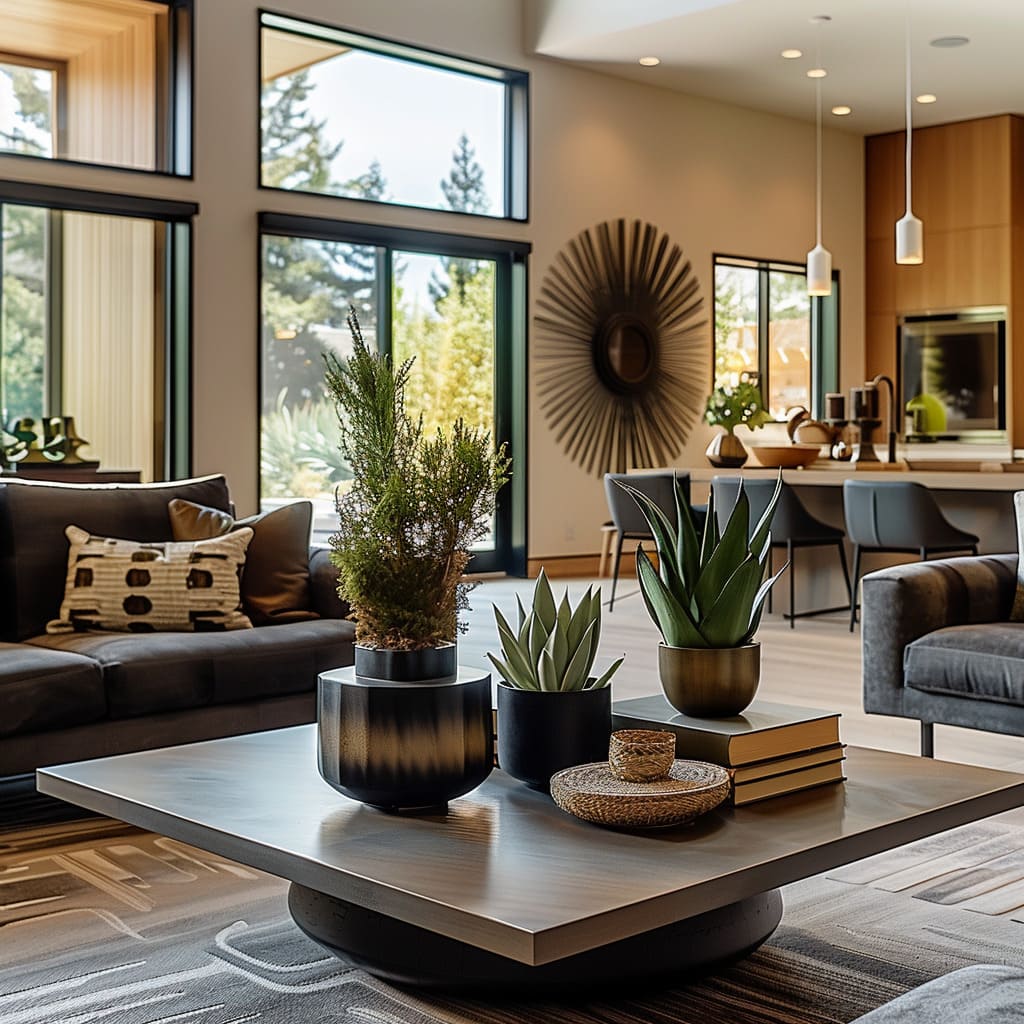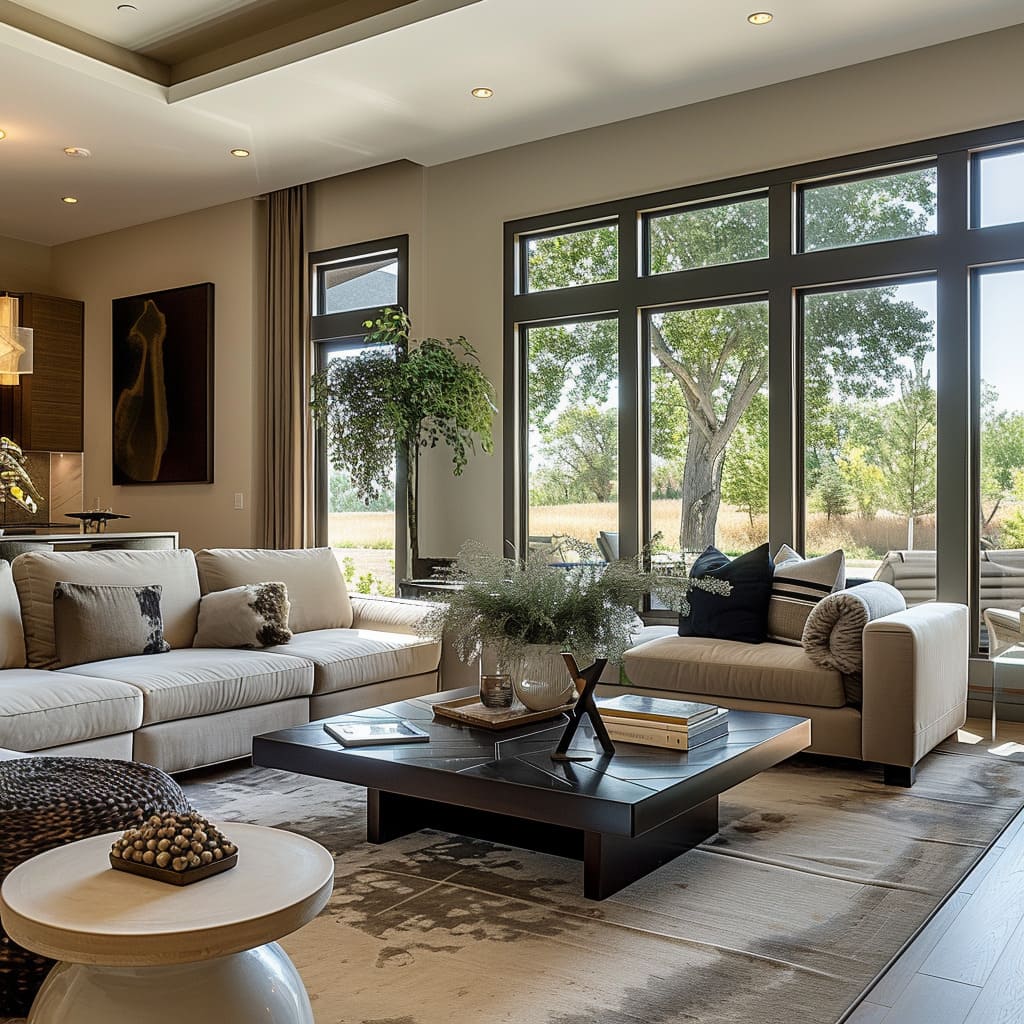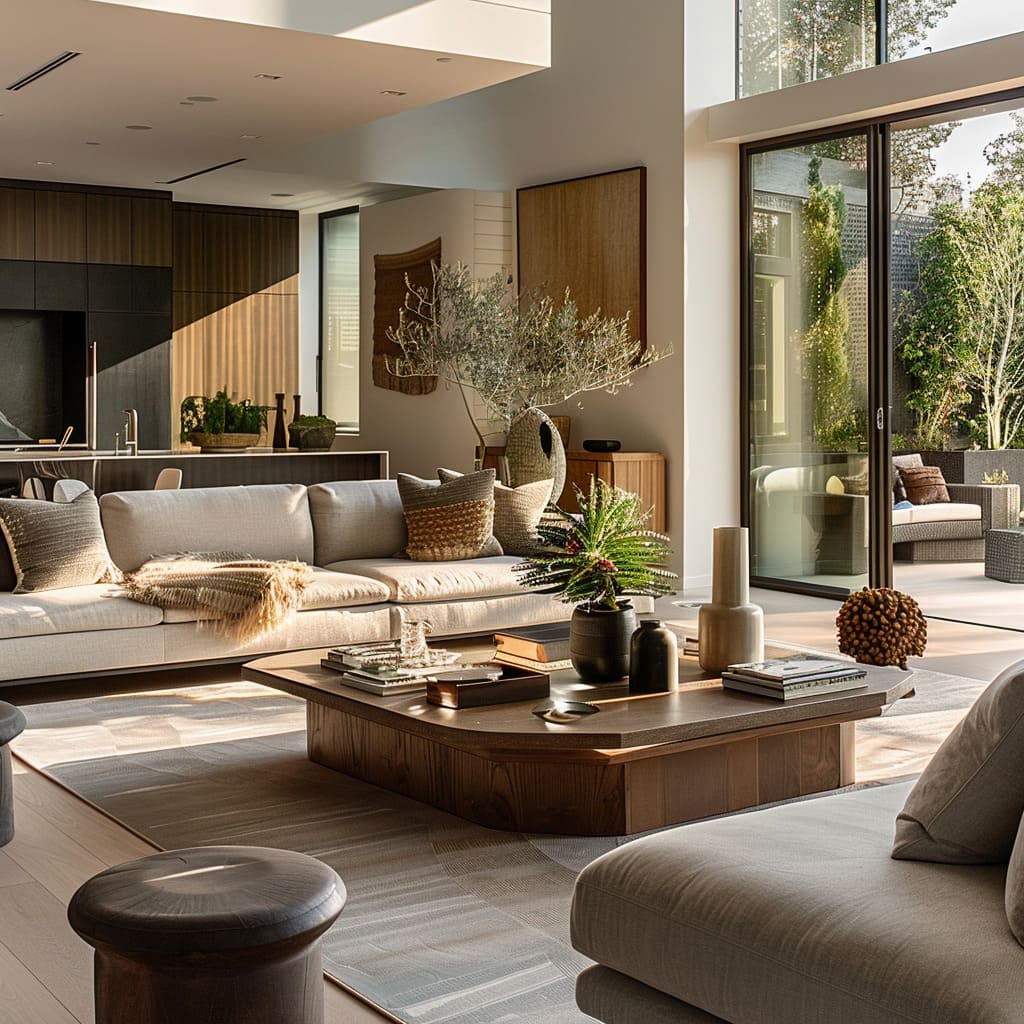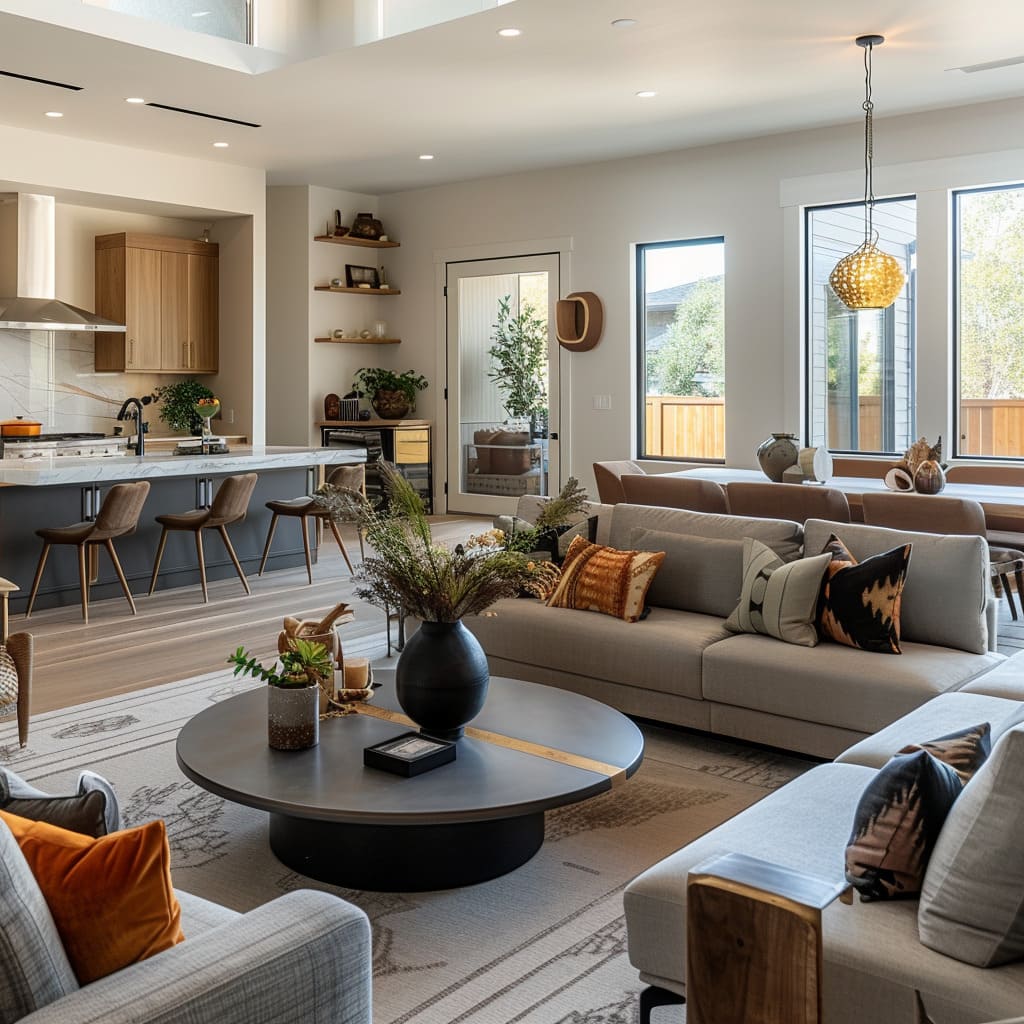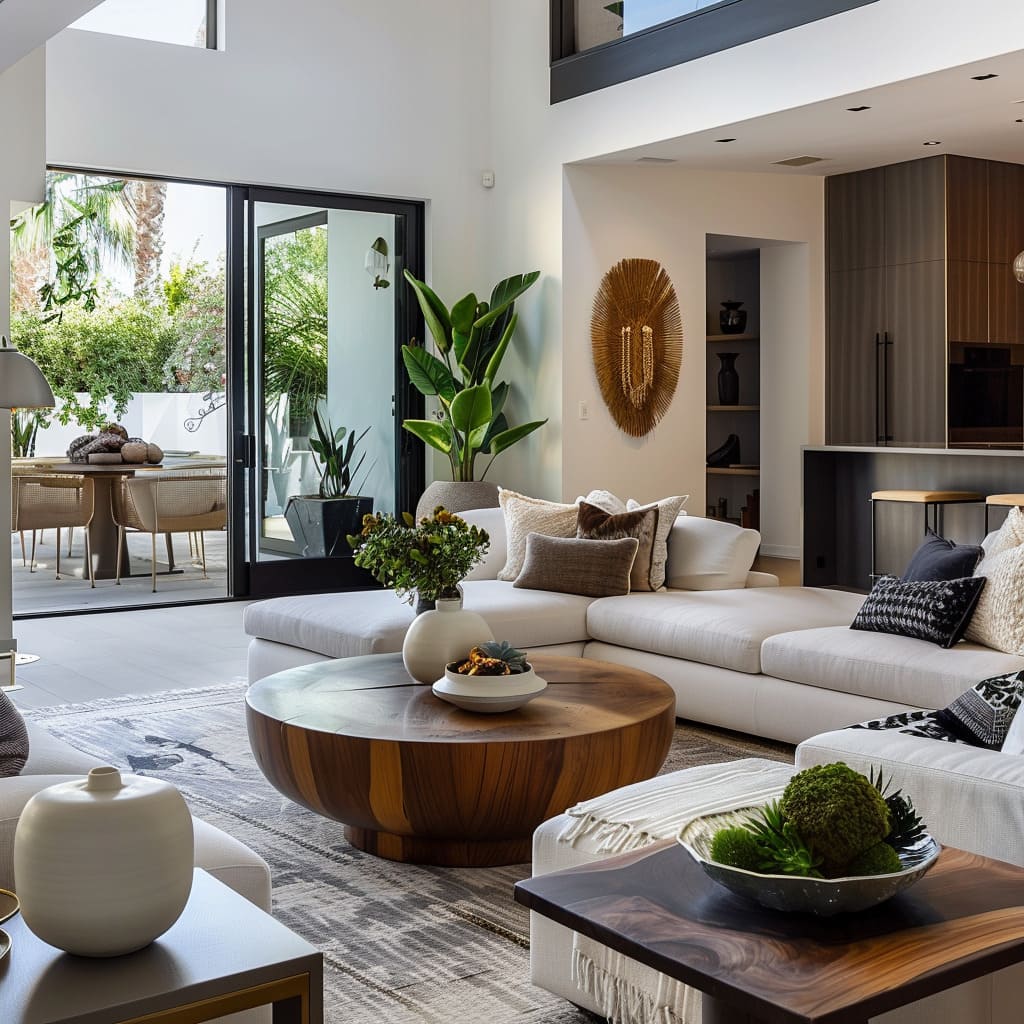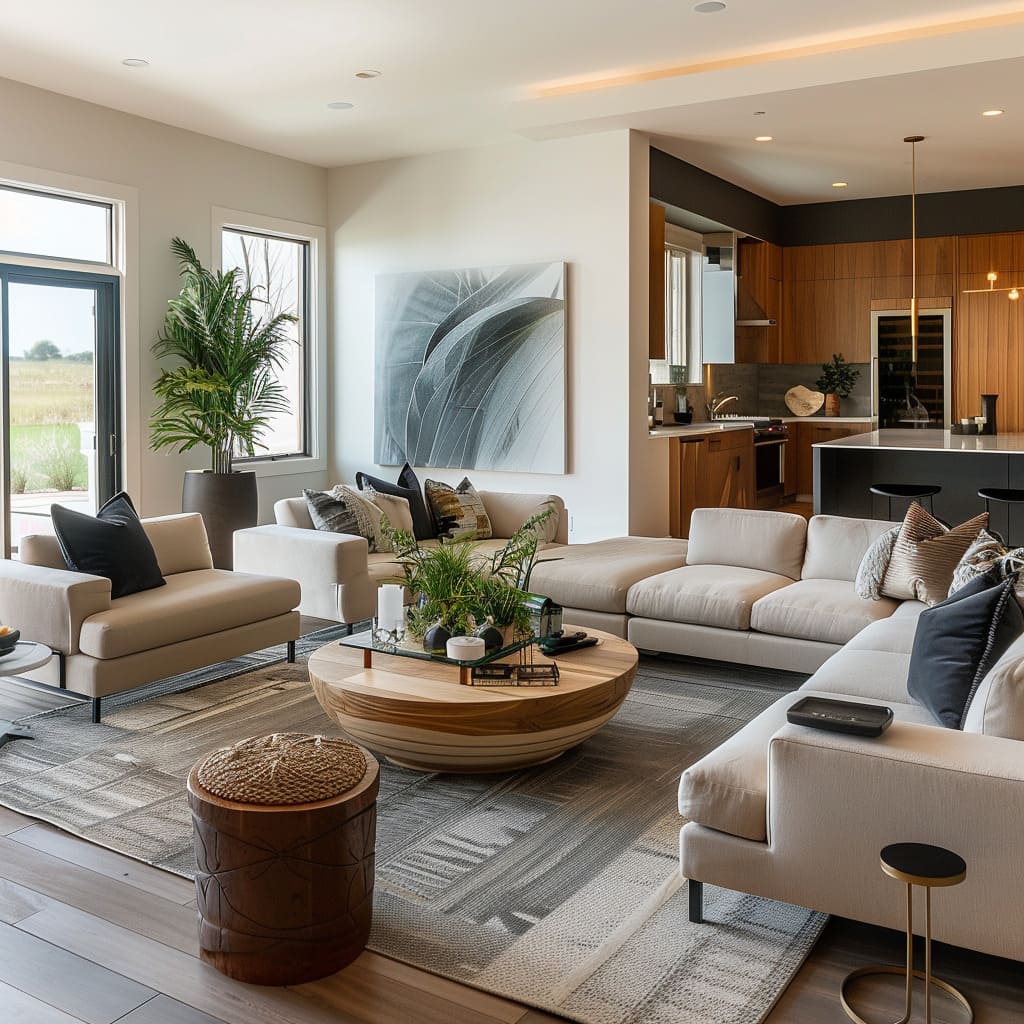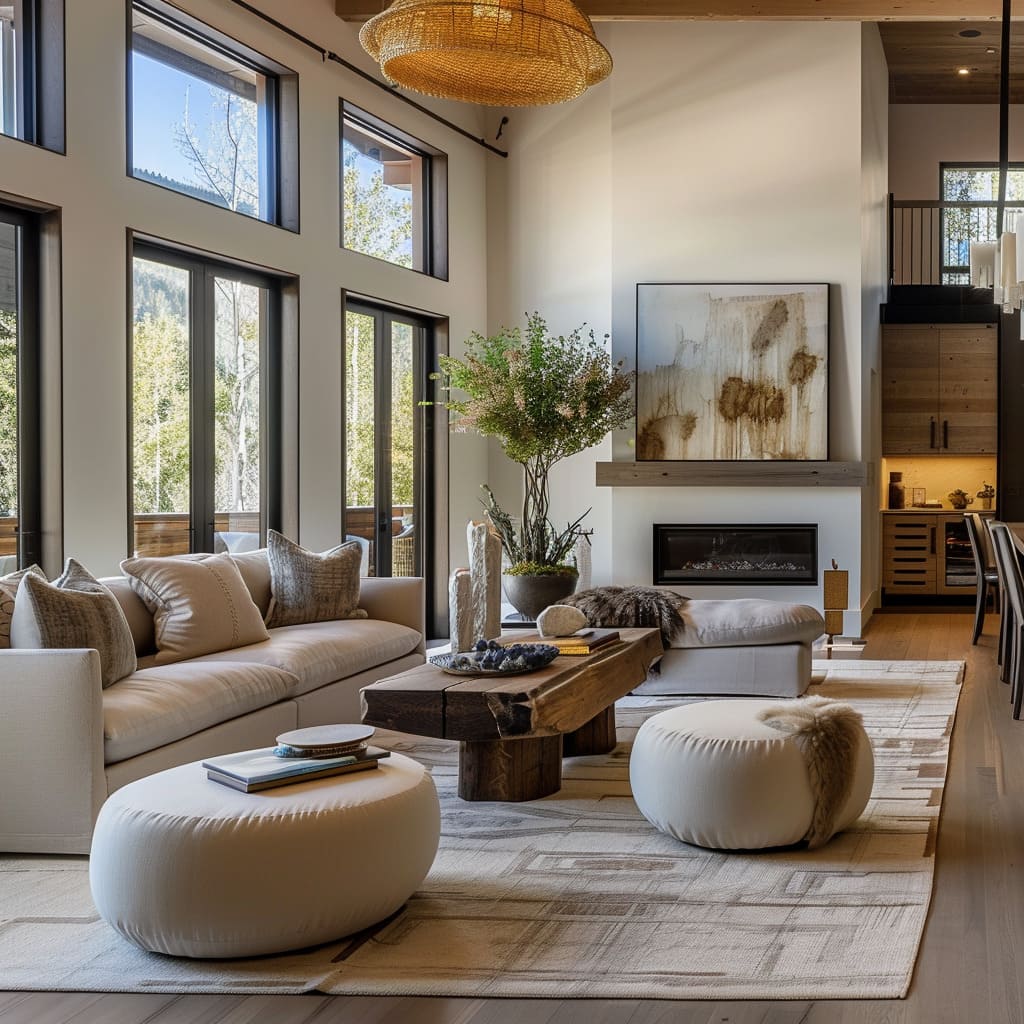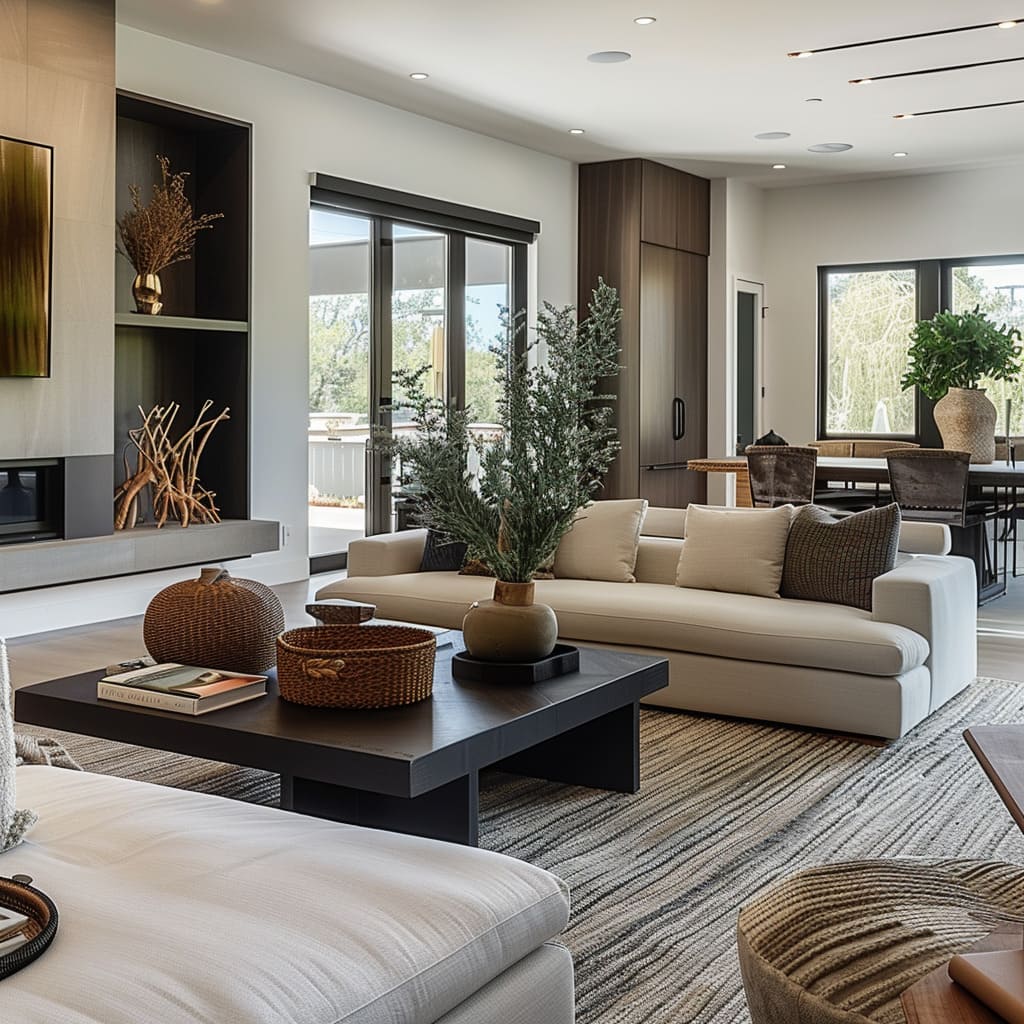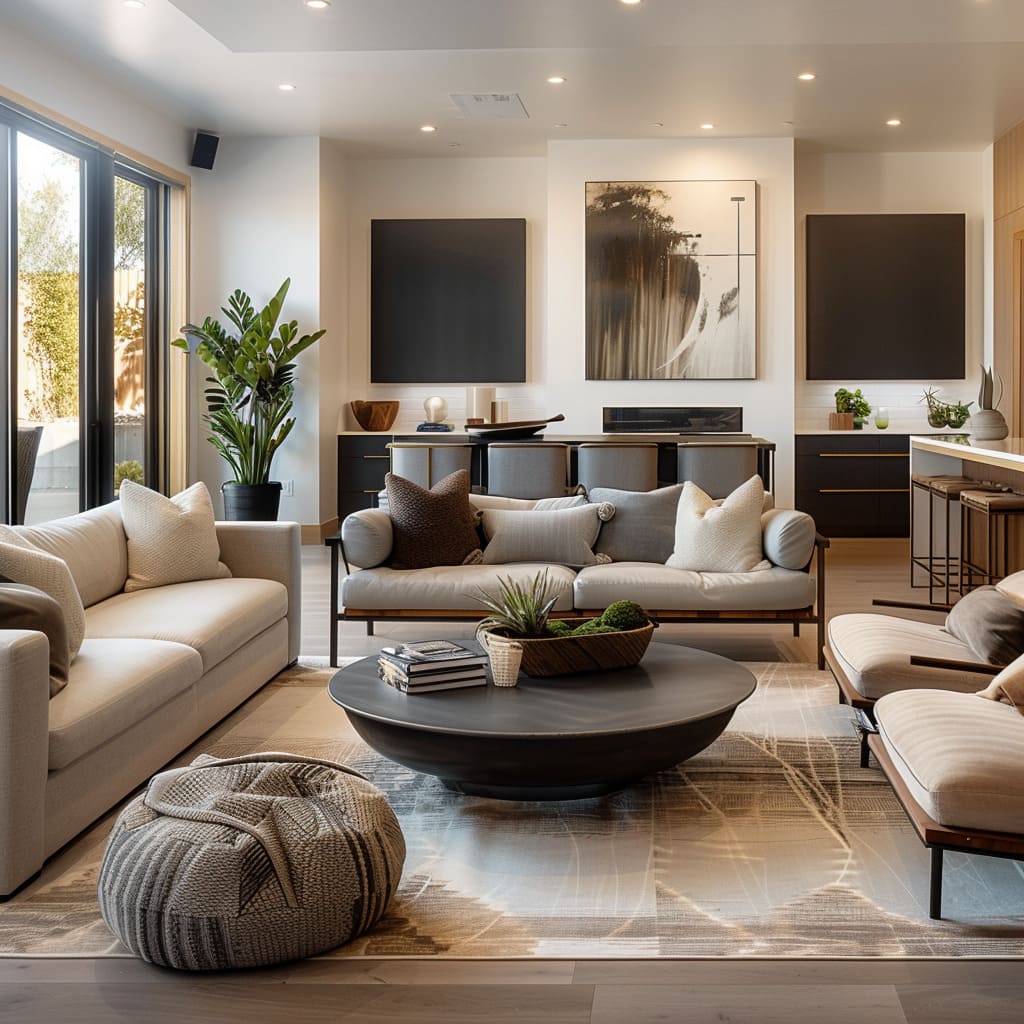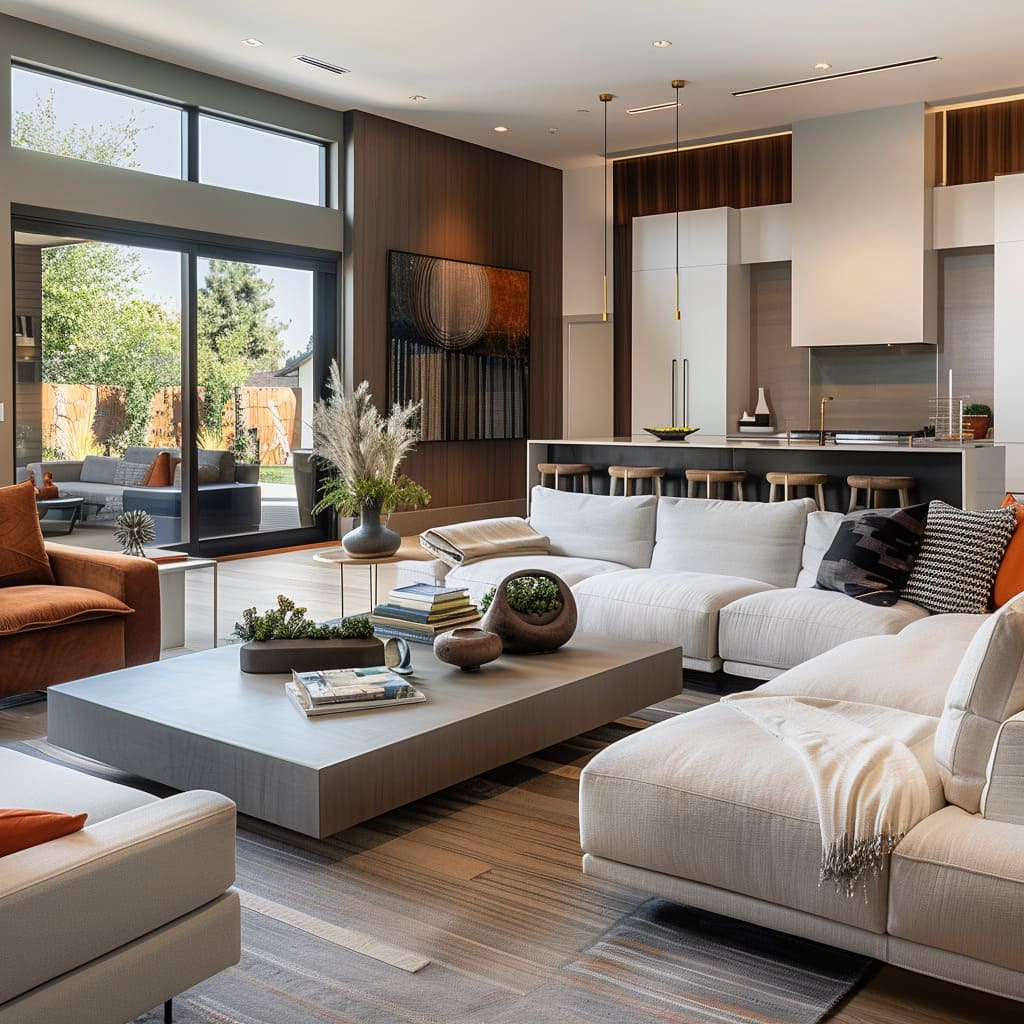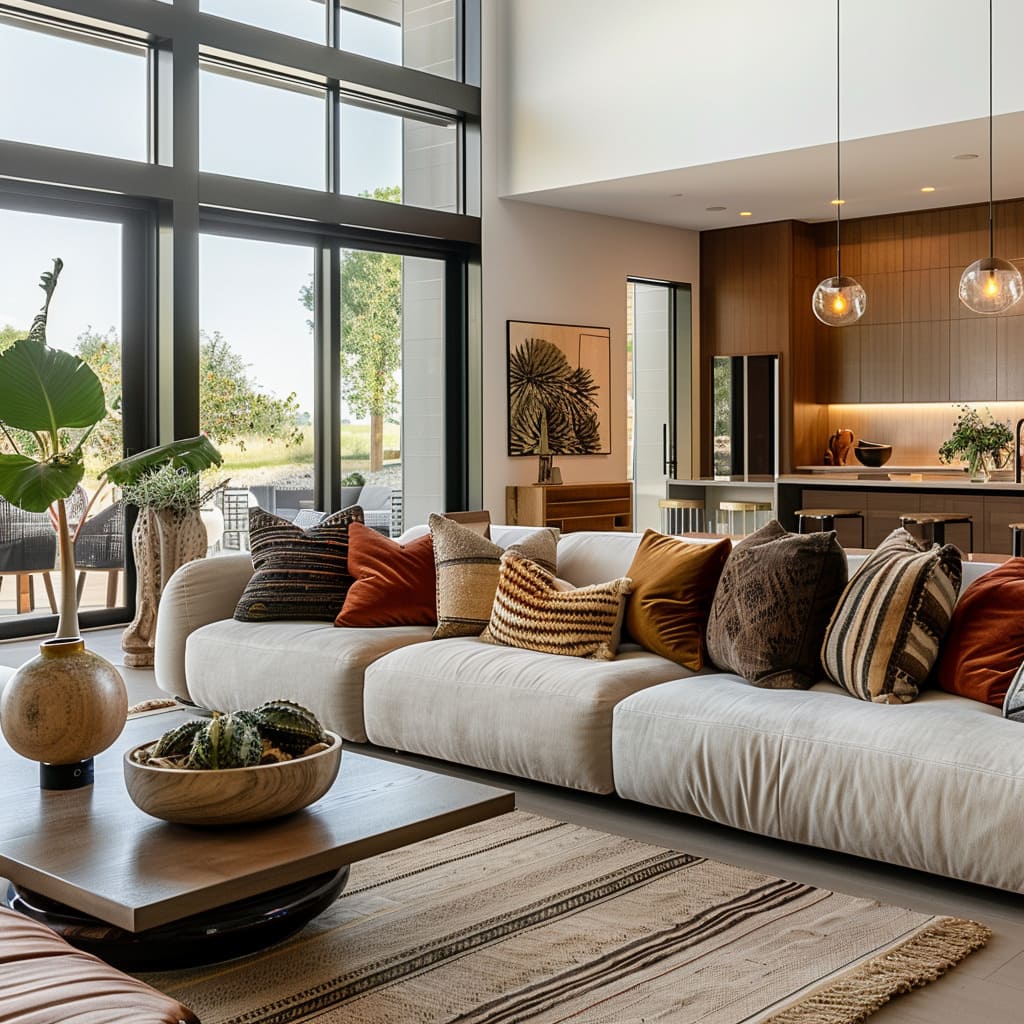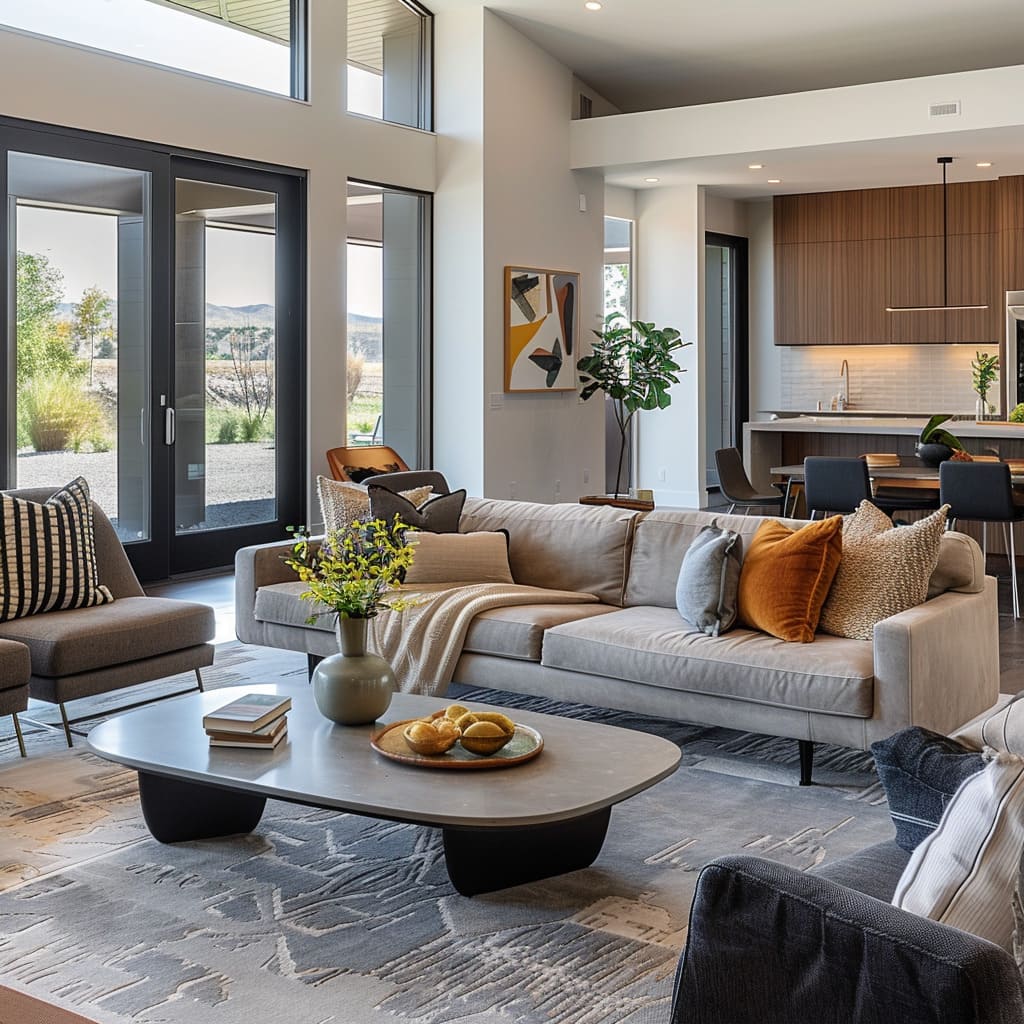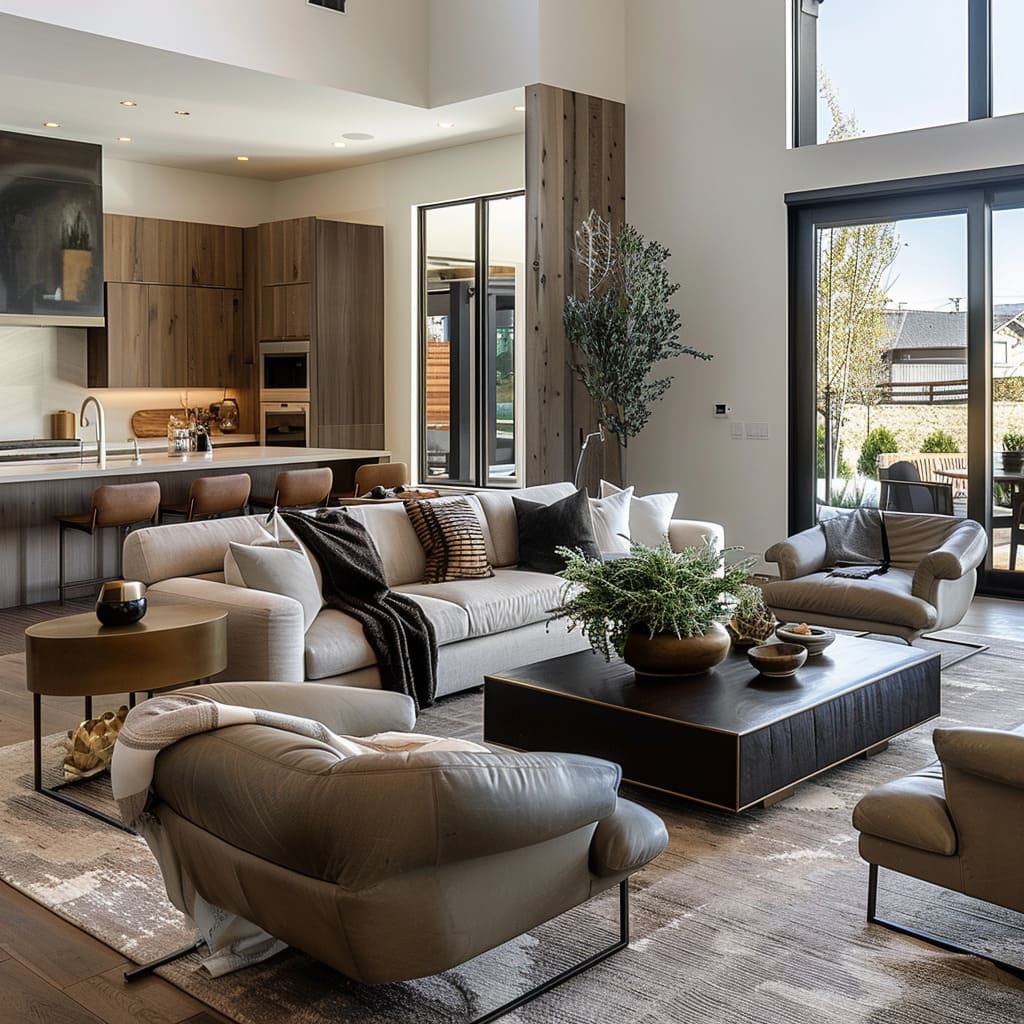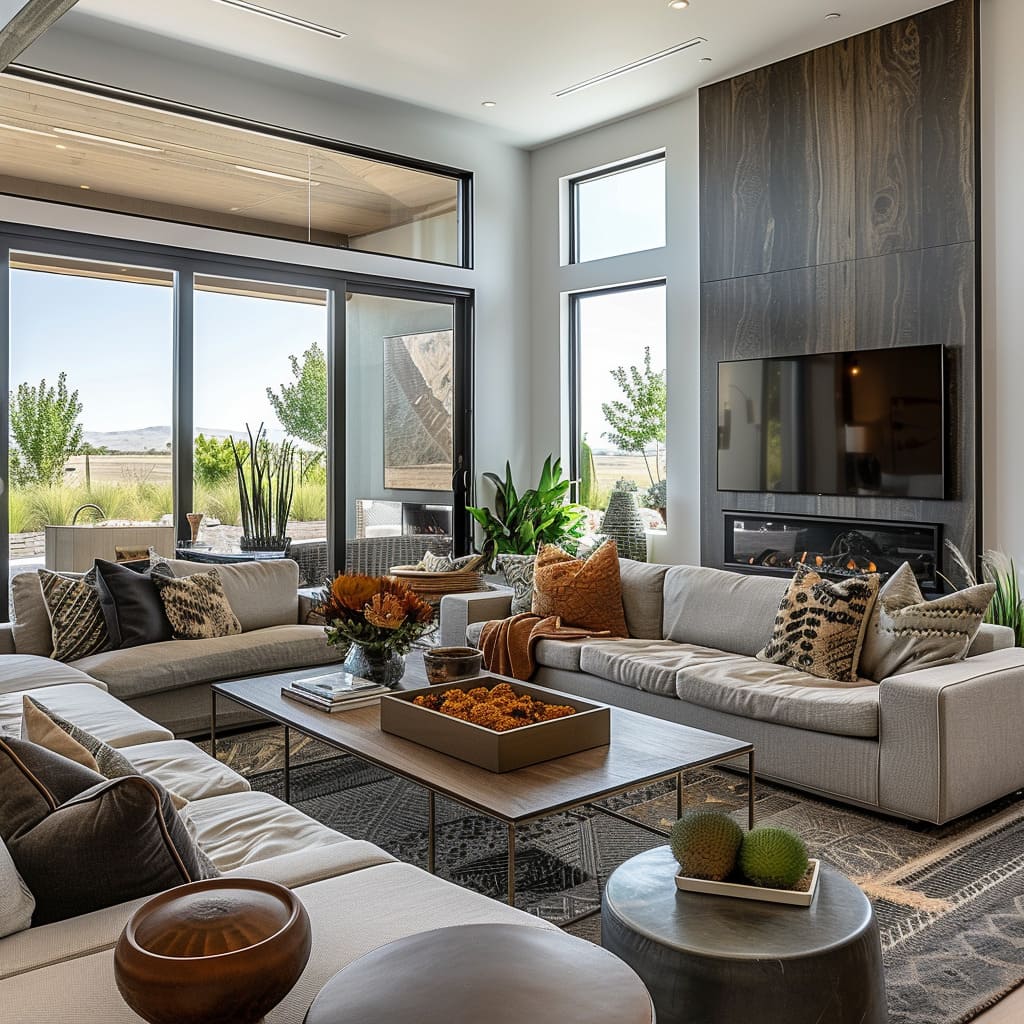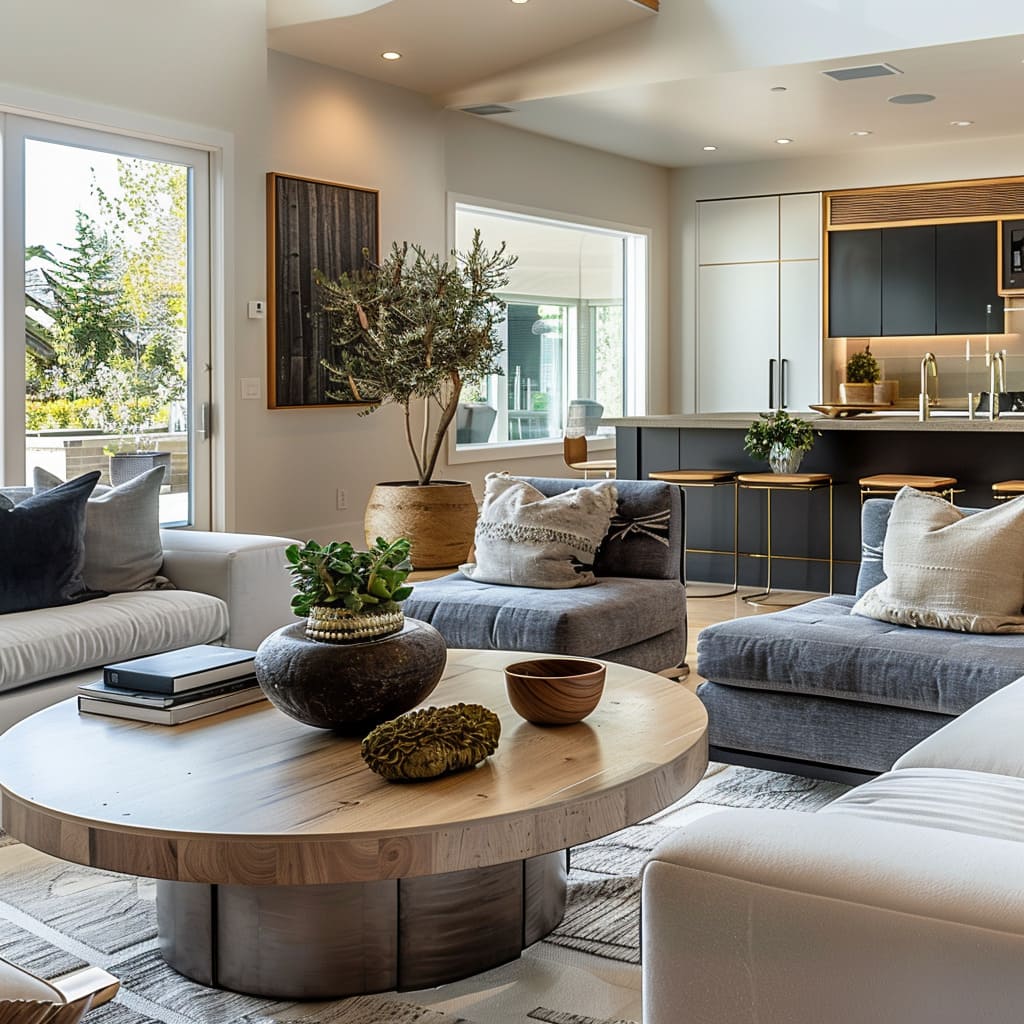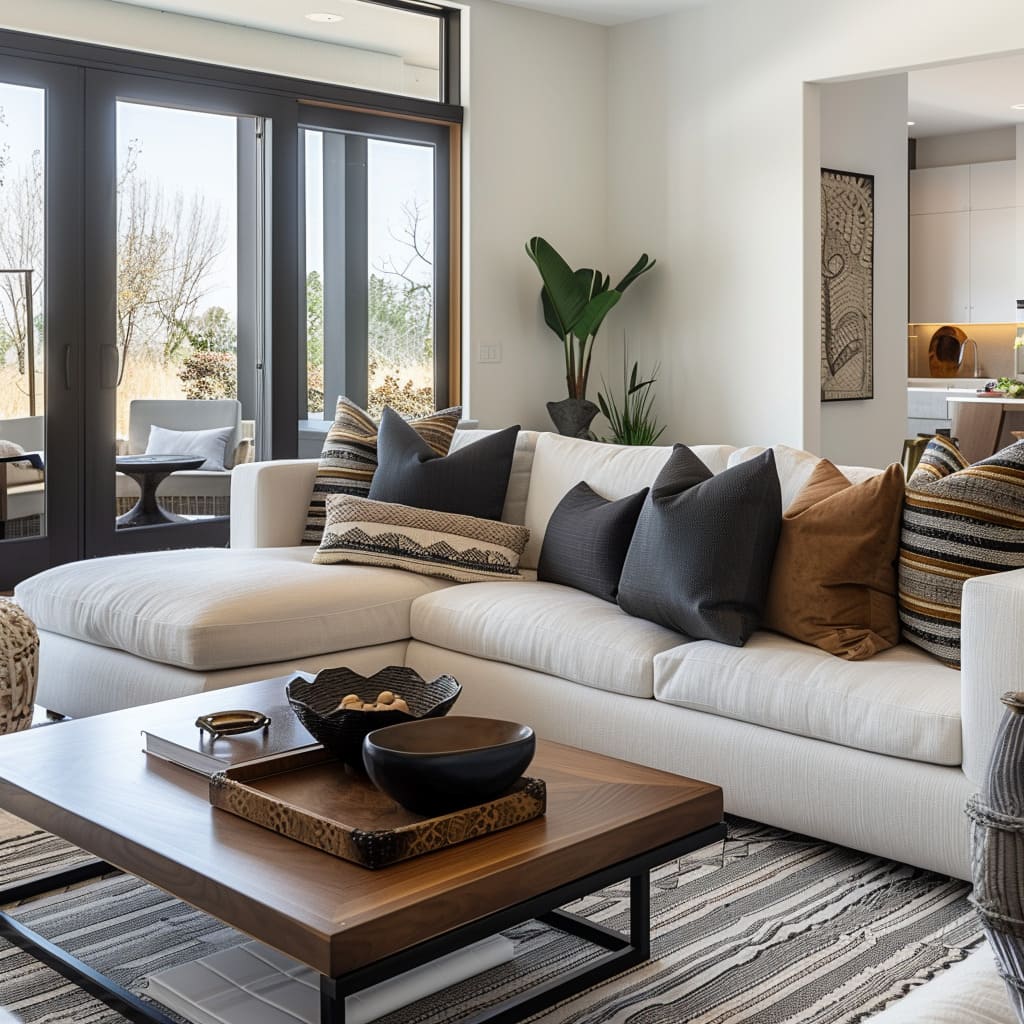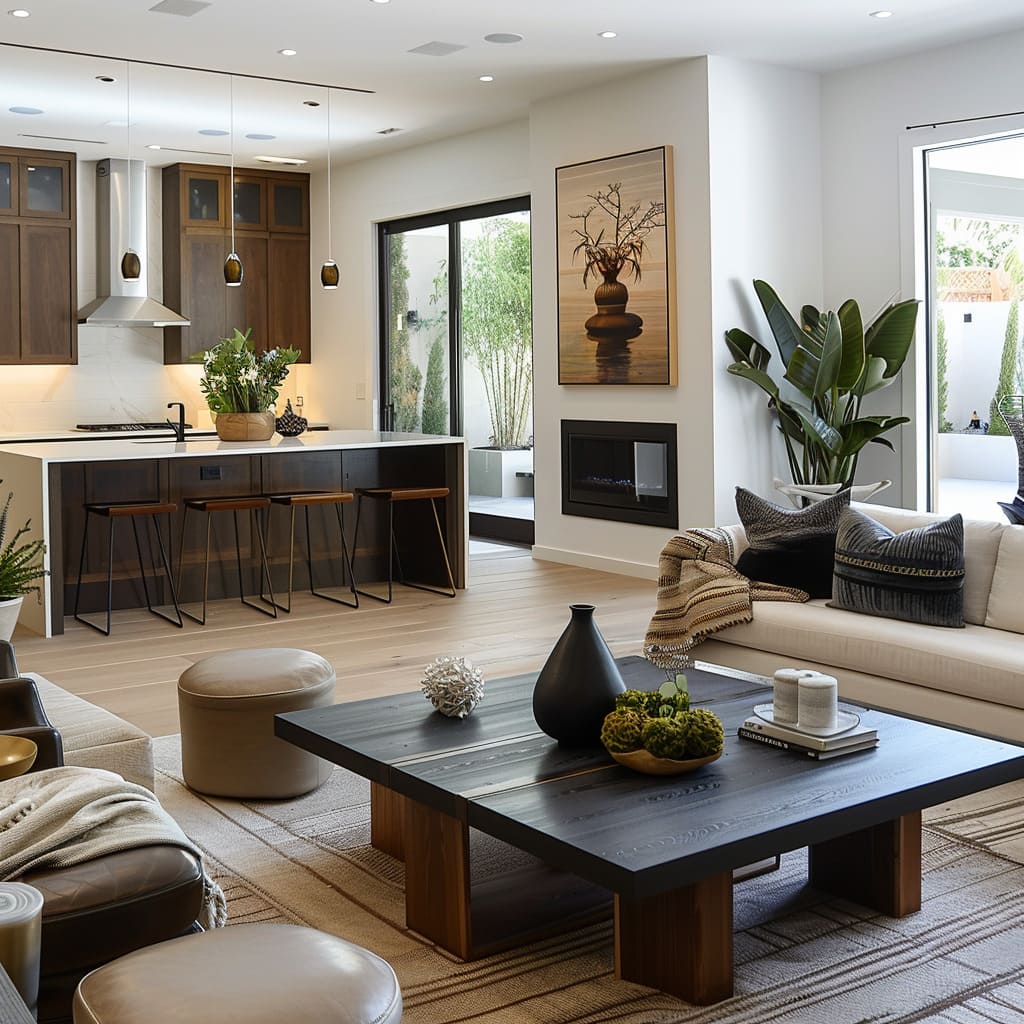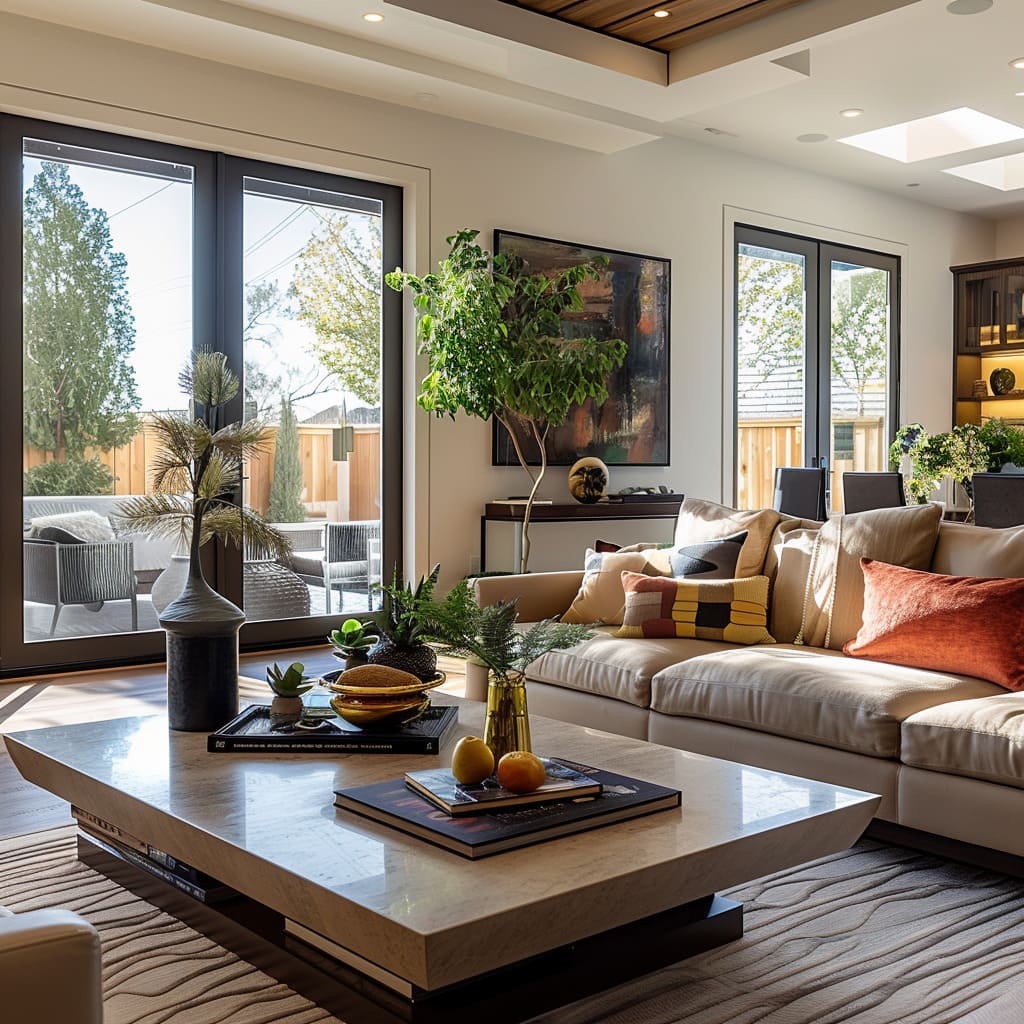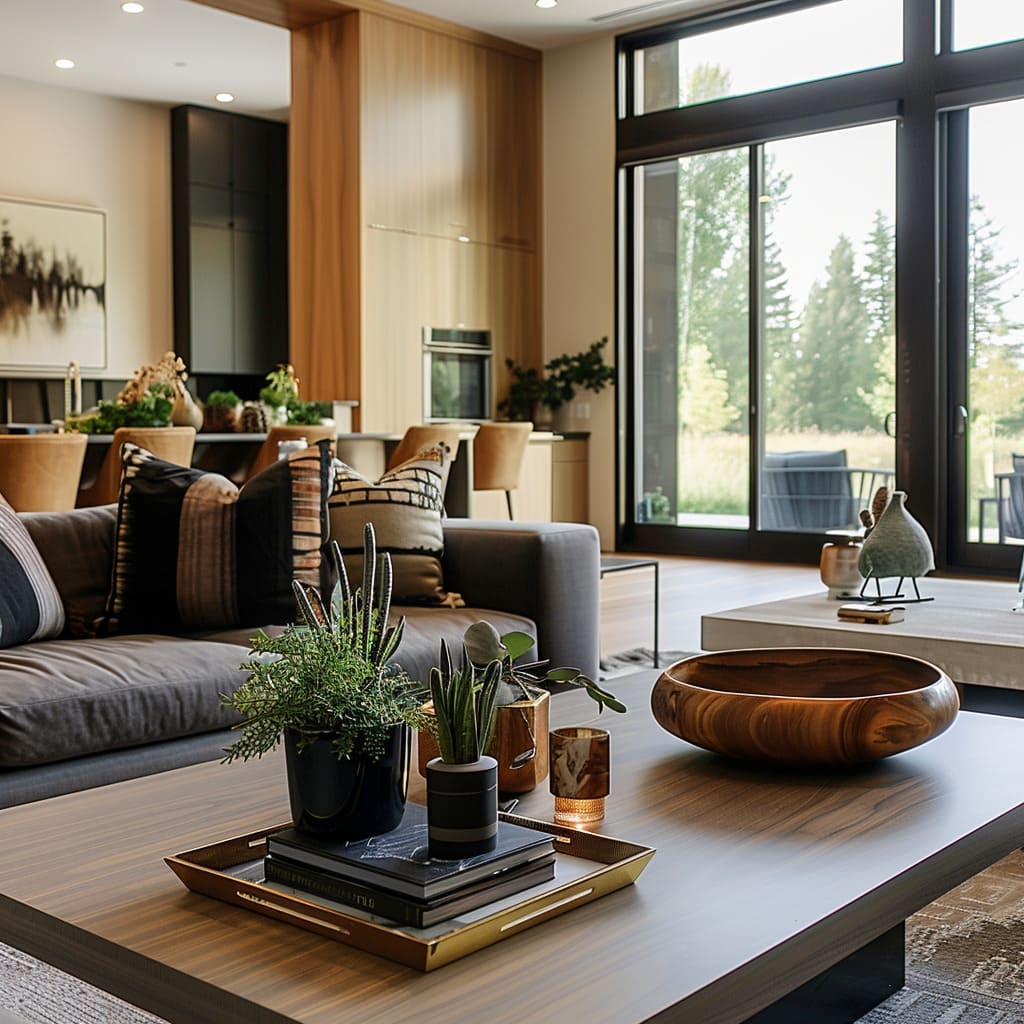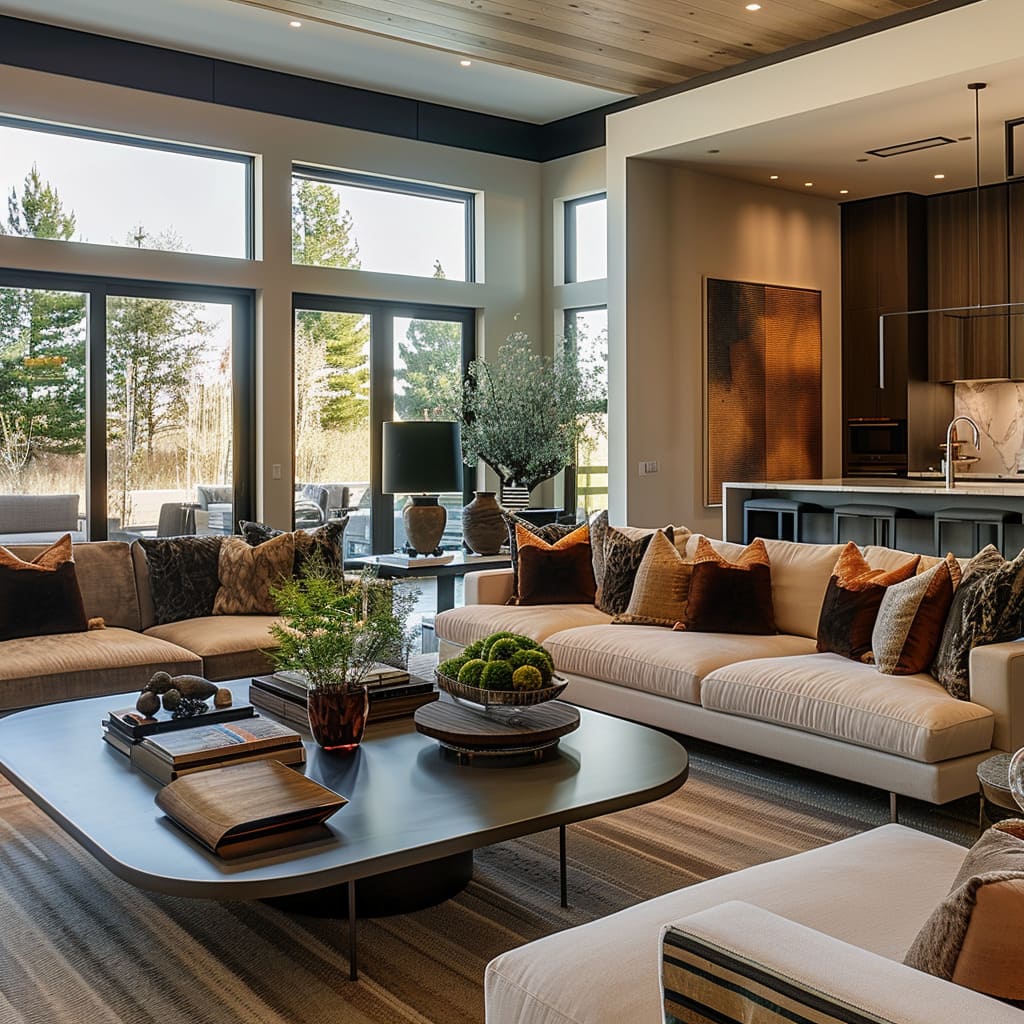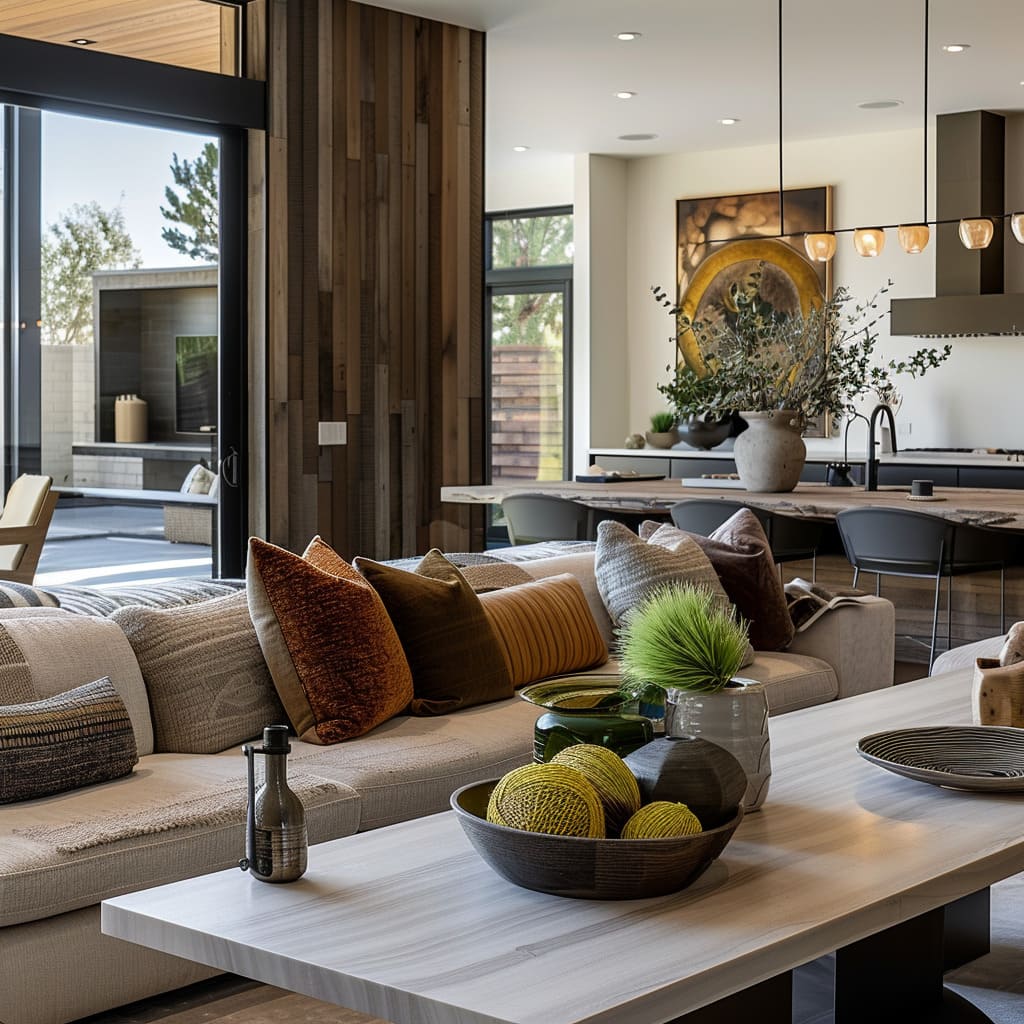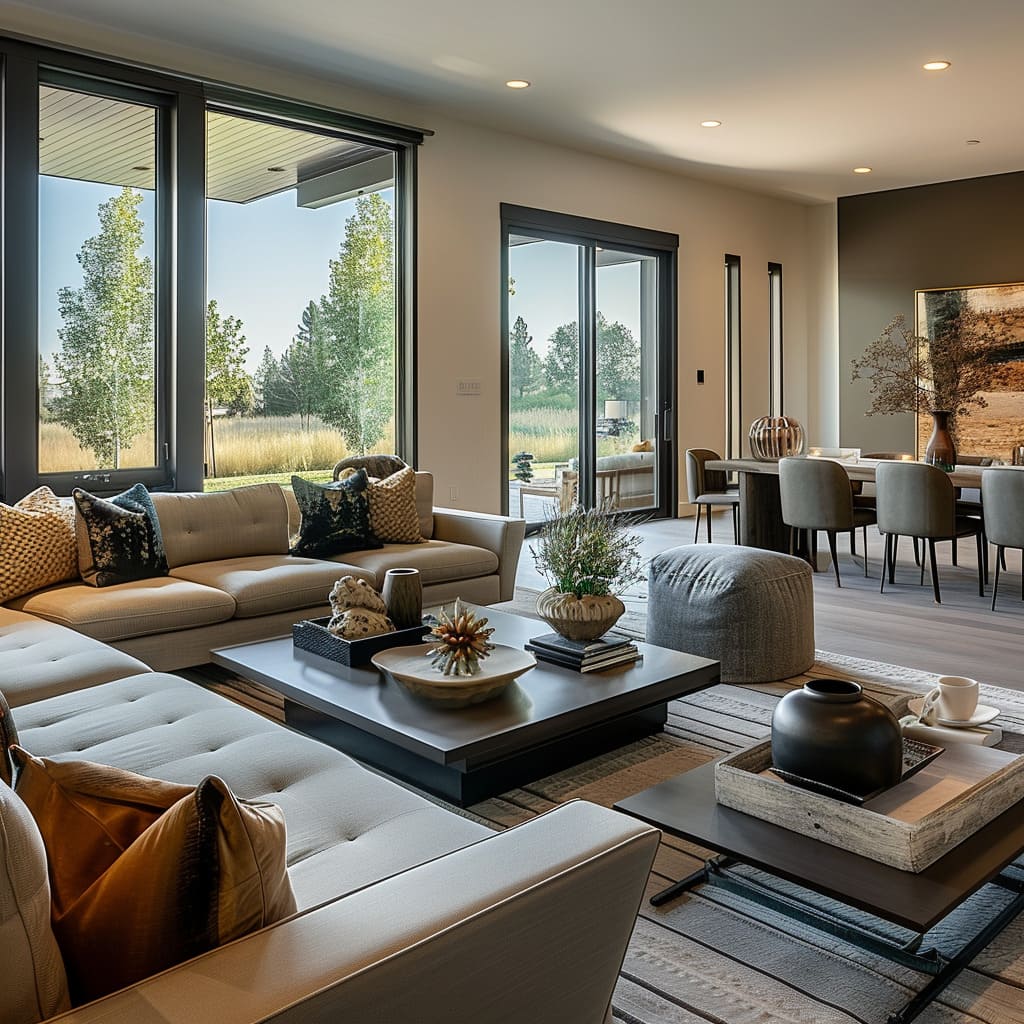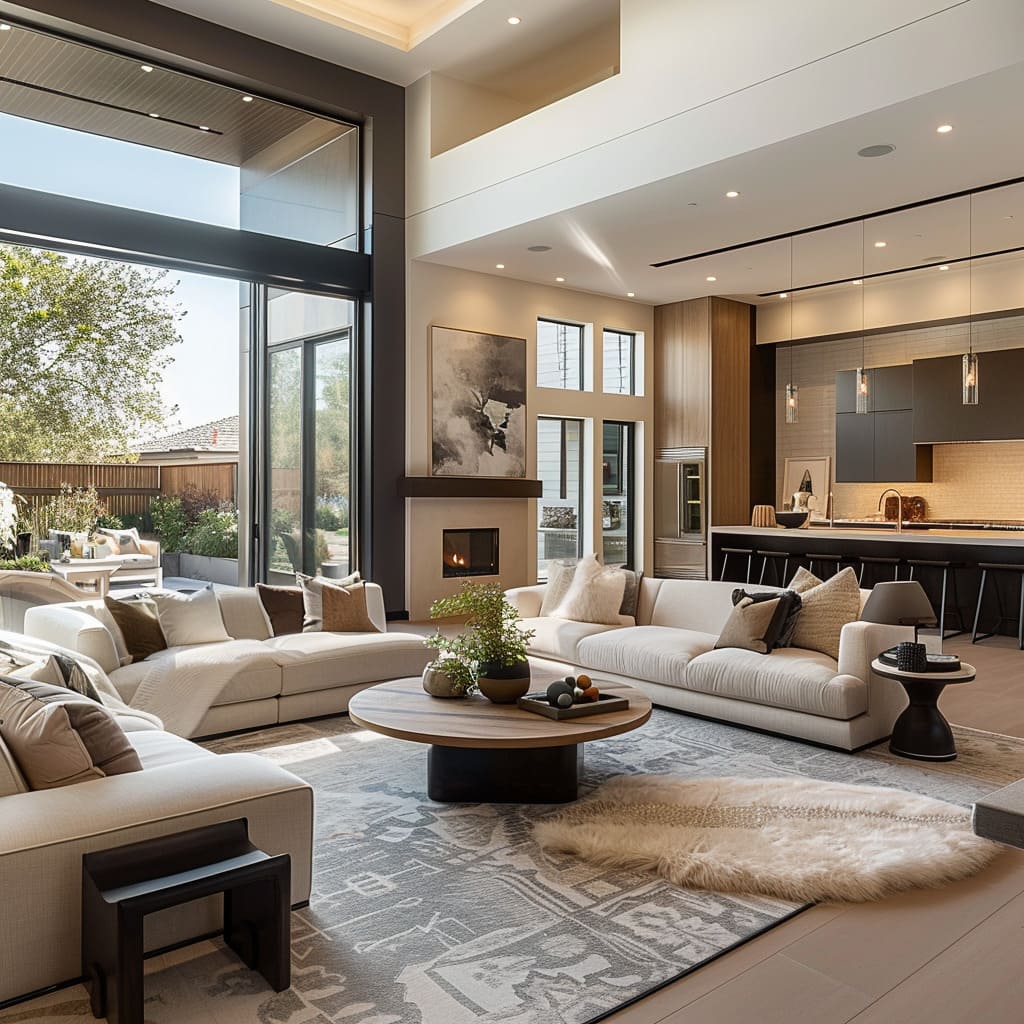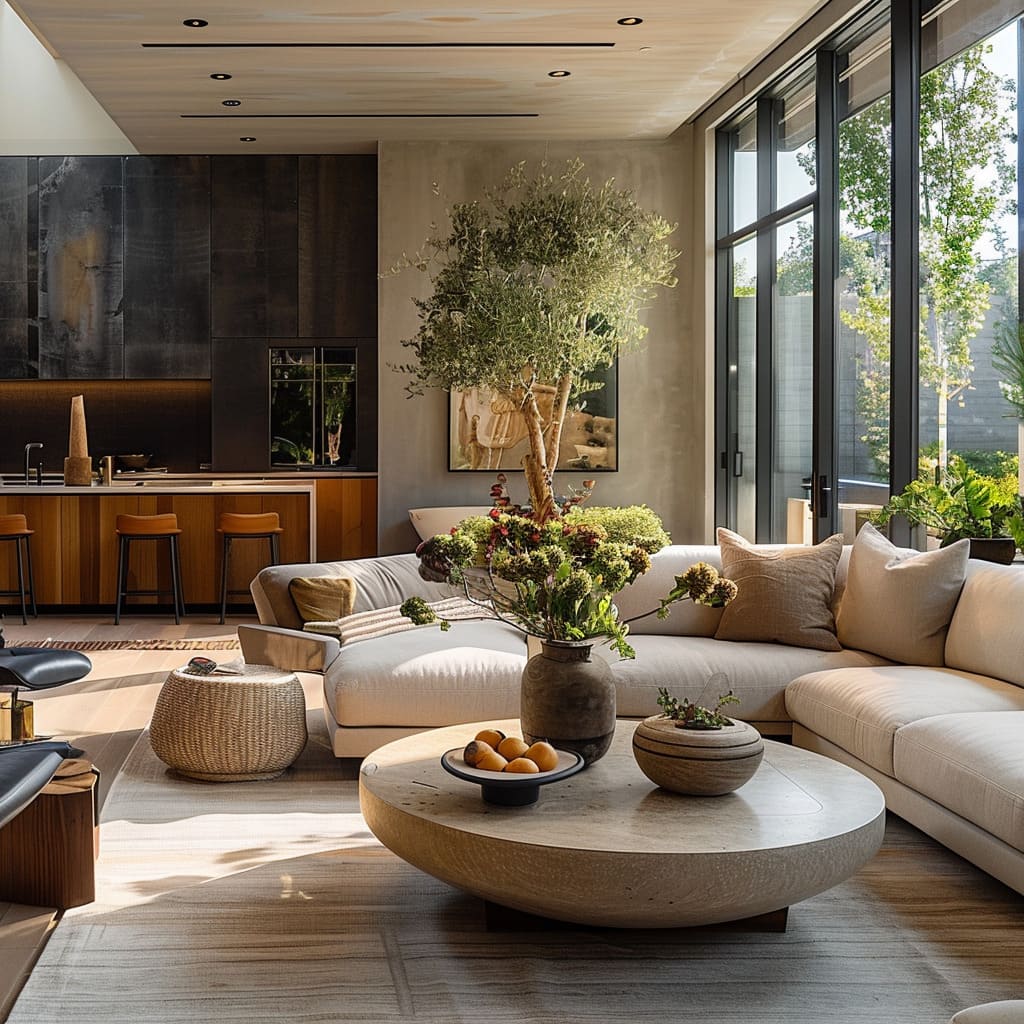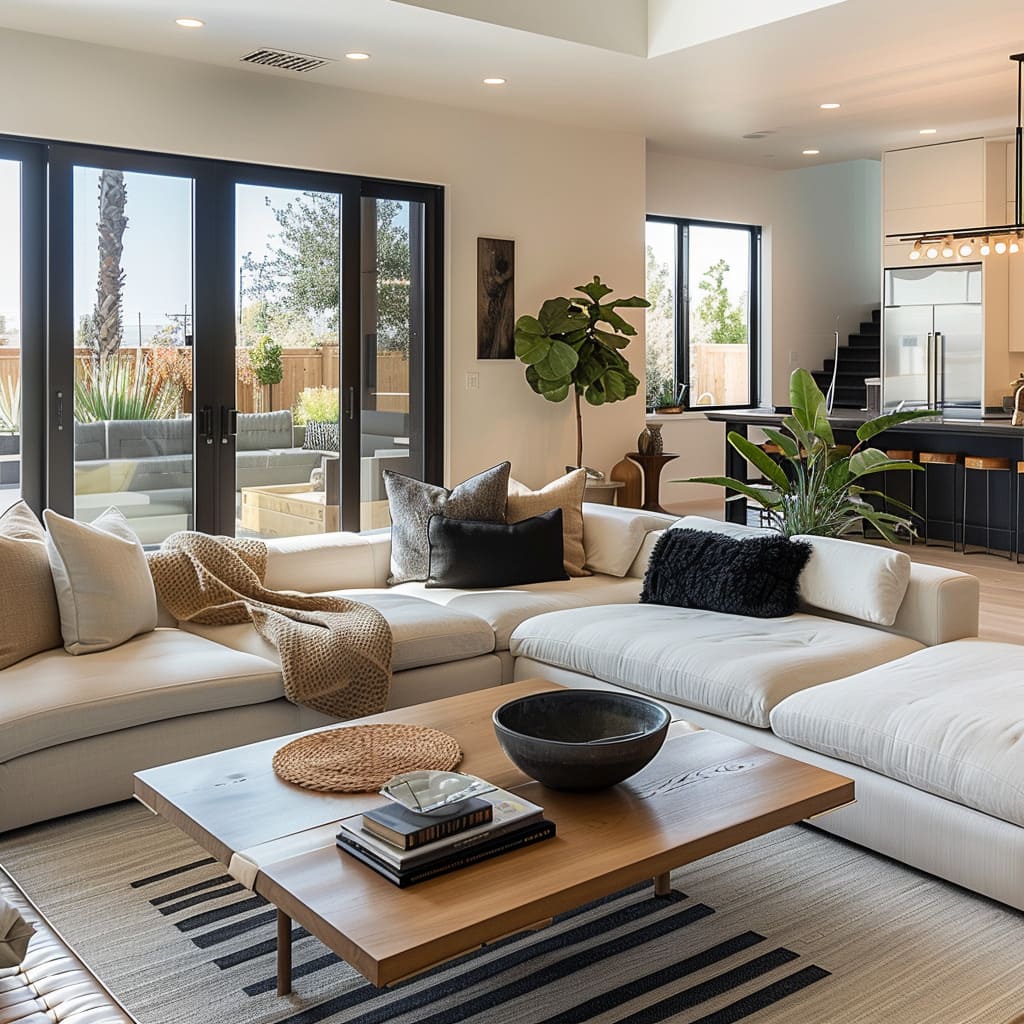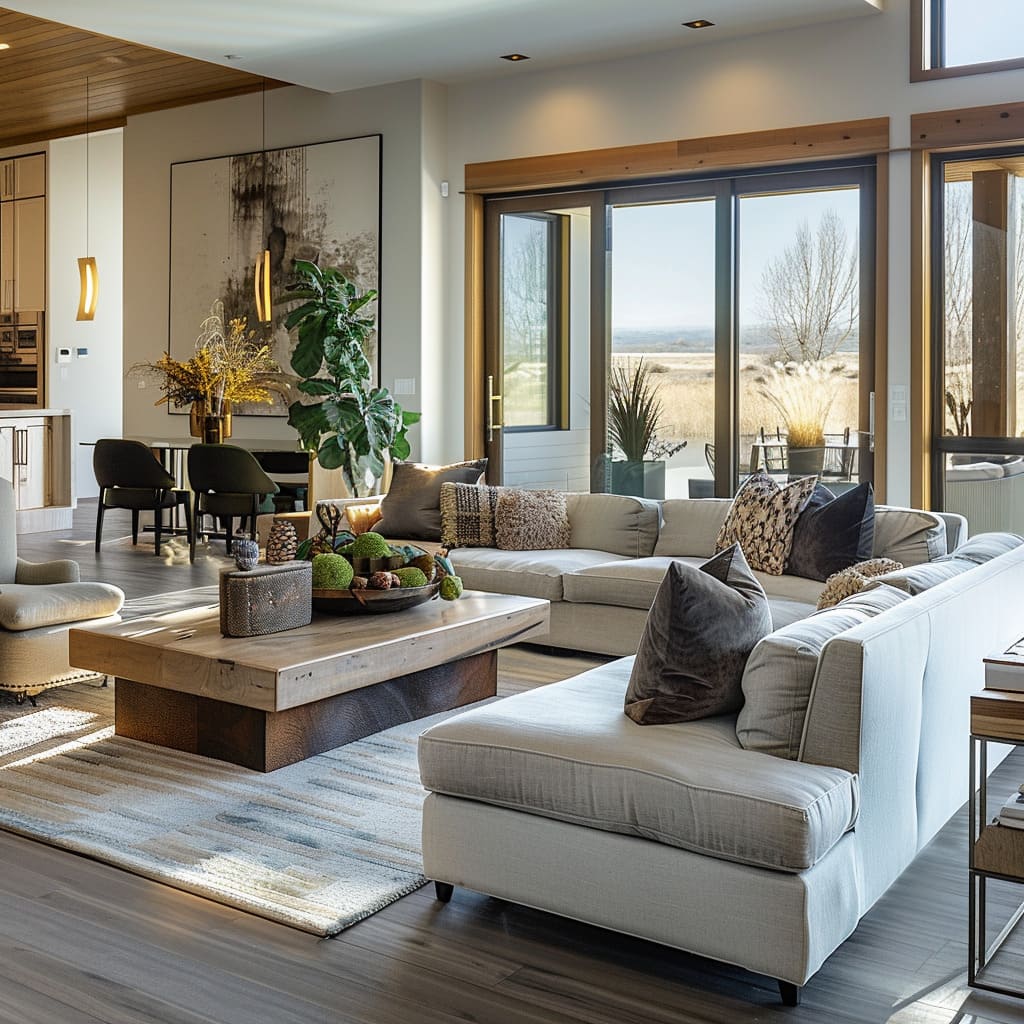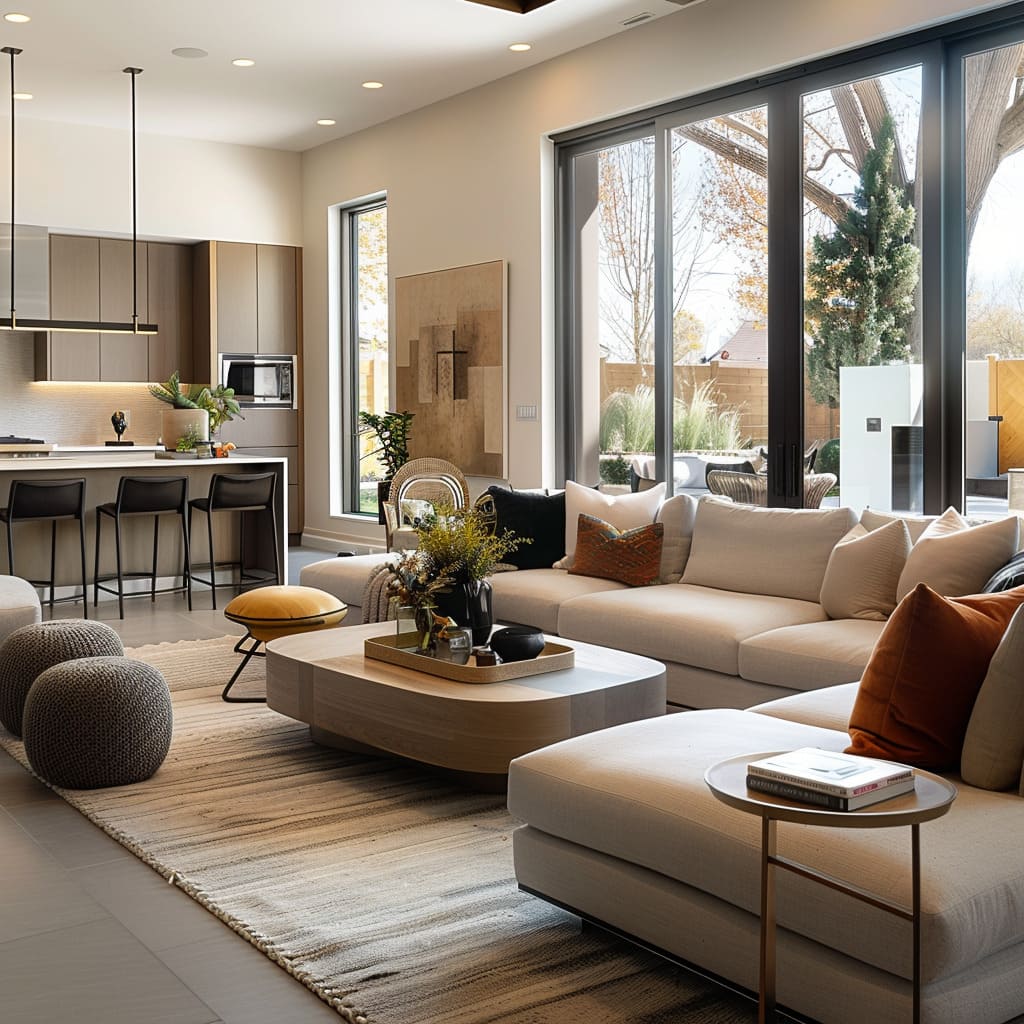In interior design, every element plays a critical role in shaping the character and functionality of a living space. This article offers an immersive exploration into the realms of spatial design, aesthetic style, material texture, functionality, comfort, and decorative details.
Each section delves into how these aspects harmoniously blend to create environments that are not only visually captivating but also profoundly livable. From the fluidity of open floor plans to the subtle interplay of textures and materials, we uncover the artistry and practicality that underpin modern interior design.
Spatial Design and Flow
The concepts of space and light play pivotal roles in creating environments that are not only aesthetically pleasing but also inherently functional. The following paragraphs delve into the core principles of spatial design and flow, examining how open floor plans, abundant natural light, seamless outdoor connections, and proportionally balanced furnishings coalesce to craft living spaces that are harmonious, fluid, and attuned to the needs of modern living.
These elements work in concert to dissolve boundaries, enhance comfort, and foster an organic synergy between the built environment and the natural world.
<h3>Open floor plan</h3> Spaces flow into each other with minimal barriers, promoting a sense of openness and fluidity. This design choice facilitates social interaction and creates a versatile environment that can be easily adapted to various activities, whether it’s casual lounging, dining, or entertaining.
The absence of traditional partitions such as walls between the living, dining, and kitchen areas fosters an inclusive atmosphere where activities and conversations can intertwine seamlessly. Additionally, the continuity in flooring materials and a consistent color scheme throughout these areas enhance the visual coherence, making the space appear larger and more integrated.
<h3>Natural light</h3> Large windows and sliding glass doors allow for abundant natural light, enhancing the airiness of the rooms. This element not only brightens the space but also plays a significant role in connecting the inhabitants with the rhythms of the day and the seasons.
Strategically positioned to capture the trajectory of sunlight, these expansive glass features minimize the need for artificial lighting during the day and can reduce energy consumption. The thoughtful placement of windows and doors also facilitates passive ventilation, promoting better air circulation and a healthier living environment.
<h3>Outdoor connection</h3> The interior design incorporates views and access to outdoor spaces, blurring the lines between inside and outside. This design strategy extends the living space beyond the confines of the interior, inviting the landscape into the daily experience of the home.
Patios, decks, or gardens become natural extensions of the interior space, with the transitional areas such as thresholds designed to encourage movement and interaction with the outdoors. This seamless integration is often achieved through the continuity of materials, like extending interior flooring to the outside, and through the alignment of indoor and outdoor seating areas to create a unified living environment.
<h3>Harmonious proportions</h3> Furniture and decor are scaled to the room size, maintaining balance and proportionality. This careful consideration ensures that each piece of furniture not only fits the space physically but also suits the visual weight of the room, avoiding overcrowding or sparse arrangements that can disrupt the flow of movement.
The proportional relationship between furniture, such as sofas and coffee tables, and the surrounding negative space allows for comfortable pathways and contributes to a well-composed aesthetic. Moreover, the use of consistent and repetitive design elements, like cushion sizes or artwork dimensions, establishes a rhythm that guides the eye smoothly around the space.
Aesthetic and Style
From the tranquil allure of a neutral color palette to the definitive presence of clean lines and geometric forms, each element weaves together to form a tapestry of design that is as elegant as it is functional. Here we uncover the principles that transform a house into a home, one that speaks in soft whispers of minimalistic decor, statement art, and architectural features that anchor and define.
<h3>Neutral color palette</h3> Shades of beige, white, and gray dominate the space, creating a calming and sophisticated backdrop. This palette is selected not only for its timeless quality but also for its ability to reflect light, making the space feel more expansive.
It serves as a subtle canvas that allows textures and forms to take center stage, with variations in material finishes providing visual interest. The walls act as a quiet foundation, against which the rich textures of fabrics and finishes become more pronounced, from the matte surfaces of sofas to the glossy sheen of kitchen cabinetry.
<h3>Clean lines</h3> Furniture and architectural details feature clean, straight lines, contributing to a sleek and modern aesthetic. This design principle is evident in everything from the streamlined kitchen cabinets to the rectangular frames of the sofas and chairs.
The simplicity of these forms brings an uncluttered and orderly ambiance to the space. Even the staircases and shelving adhere to this principle, with horizontal and vertical lines creating a sense of structure and formality.
<h3>Cohesive style</h3> There’s a consistent design language throughout the space, ensuring visual harmony. Elements such as color, material, and form are carefully curated to create a unified look that flows from room to room.
This is achieved through repeating patterns and textures, as well as a consistent color scheme that ties different areas together. The furniture pieces and decorative elements echo each other in design and tone, ensuring that each room feels part of a whole.
<h3>Minimalistic decor</h3> Decorations are kept to a minimum, with selective pieces that complement the overall design. This approach to decor ensures that each piece is intentional and has a purpose, whether it’s functional or purely aesthetic.
Every decorative object seems carefully chosen to enhance the space without overwhelming it, from the simple elegance of the vases to the understated design of the lighting fixtures.
<h3>Statement art</h3> Bold artwork serves as a focal point in several rooms, often in monochromatic or muted tones. This art is not merely decorative but plays an integral role in defining the character of the space.
The artwork is strategically placed to draw the eye and add a personal touch that reflects the inhabitants’ tastes, while still adhering to the overall minimalist theme.
<h3>Geometric forms</h3> Circular tables, rectangular sofas, and square pillows reinforce the geometric aesthetic. This use of shape adds a layer of complexity and interest to the space, providing a subtle yet powerful form of visual appeal.
The designs showcase how these geometric forms not only structure the space but also create a sense of balance and order, contributing to the overall contemporary feel of the rooms.
<h3>Architectural features</h3> Ceiling designs and partial walls act as visual anchors in the open space. These features define different areas within the larger open-plan layout without the need for full partition walls.
The ceiling treatments, such as coffers and recessed lighting, delineate zones and add a layer of sophistication. Partial walls and changes in ceiling height subtly mark transitions between functional areas, reinforcing the open plan while still providing a sense of structure and intimacy.
Materiality and Texture
The tactile allure of an interior space is as significant as its visual appeal, with textures and materials playing a fundamental role in the overall sensory experience of a home. In the following exposition on materiality and texture, we will explore how the interplay of various surfaces—from the rugged charm of wood grains to the cool opulence of marble countertops—creates a rich tapestry that appeals to both the eye and the touch.
Subtle metal details and reflective surfaces add layers of sophistication, contributing to a design that is both elegant and functional. Let us delve into the nuances of how material choices and textural diversity can profoundly influence the atmosphere and character of living spaces.
<h3>Textural contrast</h3> A variety of textures, from smooth and sleek to woven and knitted, add depth and interest. The interiors reveal a deliberate interplay of surfaces; for instance, the smooth leather of a couch contrasts with a nubby throw, while glossy tabletops contrast with the matte finish of earthenware decorations.
Even within a monochromatic color scheme, these textural variances catch the light differently, creating a dynamic interplay that invites touch and exploration. In living areas, plush rugs lie atop hardwood floors, and soft, billowing curtains frame the crisp lines of the windows, providing a sensory experience that is rich and layered.
<h3>Wood accents</h3> The use of wood in cabinetry, flooring, and furniture brings warmth and a touch of nature inside. The wood tones vary from deep, chocolate browns to light, natural hues, each adding a unique warmth and grounding the space.
The grain of the wood itself contributes an organic pattern that stands in subtle contrast to the more geometric lines of the furniture. Shelving and media units showcase the beauty of wood craftsmanship, while wooden beams or panels can occasionally be seen contributing to the ceiling’s architecture, further enhancing the naturalistic feel.
<h3>Luxurious materials</h3> Marble countertops, high-quality fabrics, and plush cushions denote luxury without ostentation. The marble, often seen in the kitchens, provides a cool, elegant surface that is both visually stunning and practical for food preparation.
The fabrics of the furniture and throw pillows range from velvet to fine wool, offering a tactile and visual softness that invites relaxation. These materials are chosen not just for their aesthetic appeal but also for their durability and comfort, ensuring that the spaces are not just showrooms but lived-in parts of the home.
<h3>Subtle metal details</h3> Hints of metal in light fixtures and furniture legs add a sleek, industrial edge. These metal elements provide a modern contrast to the softer textures in the room, with their reflective surfaces and precise construction.
One can observe the slender metal frames of chairs and tables, the polished chrome of kitchen fixtures, and the occasional copper or brass accent that provides a warm metallic glow. These details are often the final touch that completes a room, giving it a refined and contemporary look.
<h3>Reflective surfaces</h3> Mirrors and glossy finishes reflect light and create the illusion of a larger space. Strategically placed mirrors both amplify the light and visually double the room’s dimensions.
High-gloss cabinets in kitchens or entertainment units reflect both natural and artificial light, contributing to the luminosity of the space. These reflective elements serve as design features that expand the visual square footage of the rooms, making them feel more spacious and open.
Functionality and Comfort
This section delves into the elements that embody this practical elegance, from the subtle ambience of recessed lighting to the seamless integration of modern technology. We will explore how thoughtfully selected furniture combines aesthetic appeal with ergonomic design, ensuring each piece serves a purpose beyond mere decoration.
The arrangement of seating, the customizability of built-in elements, and the intentional softening of edges all contribute to an environment that invites relaxation and ease of use.
<h3>Recessed lighting</h3> Discreet ceiling lights provide a soft, even illumination without interrupting the minimalist vibe. This type of lighting is designed to blend with the ceiling, avoiding the visual clutter of hanging fixtures or lamps.
The lighting appears as gentle washes on the walls, enhancing the textures and surfaces without creating harsh shadows.
It is often used to highlight architectural details, like the subtle recesses and contours that might otherwise be missed. The careful placement of these lights also allows for the creation of different moods within the same space, whether bright and energizing for daytime or subdued and intimate for the evening.
<h3>Integrated technology</h3> Modern amenities like built-in speakers and smart home systems are seamlessly integrated. These high-tech features are inconspicuous, maintaining the clean lines and uncluttered aesthetic of the rooms.
One might notice the absence of visible wires or bulky equipment, suggesting a design where technology serves the inhabitants quietly and efficiently. The integration likely extends to climate control, entertainment, and security systems, all managed via discreet interfaces or even remotely, providing convenience and sophistication.
<h3>Functional furniture</h3> Pieces are chosen for both their aesthetic and their practicality, ensuring a livable space. Furniture demonstrates a dual purpose; for instance, sleek shelving units that serve as both storage and display, or coffee tables with hidden compartments.
Seating is not only designed to look inviting but also to provide ergonomic comfort. The functionality of these pieces contributes to an uncluttered environment, where everything has its place and purpose, reflecting a thoughtful approach to everyday living.
<h3>Ample seating</h3> Large sofas and sectionals provide plenty of comfortable seating for entertainment and relaxation. The designs show generous upholstered seating that invites one to sit down and unwind.
These pieces are often modular, allowing for flexibility in arrangement to suit different occasions, whether it’s a large gathering or an intimate family evening. The choice of deep cushions and supportive backs ensures that comfort is not sacrificed for style.
<h3>Custom-built elements</h3> Built-in shelves and cabinets are tailored to the space, maximizing functionality. These elements appear as natural extensions of the walls, utilizing every inch for storage or display without encroaching on the living area.
This bespoke approach means that the storage solutions are exactly suited to the needs of the space, whether it’s a series of shelves that align with the lines of the staircase or cabinets that fit snugly under a countertop.
<h3>Softened edges</h3> Although lines are clean, furniture with softened corners adds a gentle, inviting feel. The interios show that while the overall aesthetic is modern, there’s a deliberate avoidance of sharp corners or rigid forms.
This can be seen in the rounded edges of tables and the gentle contours of chair arms. Such design choices not only contribute to safety by minimizing sharp edges but also soften the visual impact of the furniture, making it appear more approachable and comfortable.
Decorative Details
In the intricate tapestry of interior design, decorative details are akin to the final brushstrokes on a canvas, bringing depth, personality, and life to the space. This segment delves into the nuanced realm of decorative accents, exploring how elements such as indoor plants, area rugs, and monochromatic accents not only embellish a room but also imbue it with character and warmth.
From the strategic placement of greenery that connects the indoors with the natural world, to the thoughtful selection of rugs that add texture and define spaces, each detail is a deliberate choice that enhances the overall aesthetic. Additionally, the use of monochromatic accents, interspersed with pops of color, demonstrates how subtlety and boldness can coexist in harmony.
Join us in discovering how these seemingly small touches play a significant role in transforming a house into a home, reflecting the tastes and personalities of its inhabitants.
<h3>Indoor plants</h3> Greenery is strategically placed to add vitality and a connection to nature. The livign rooms showcase plants of various sizes and species, from tall, lean varieties that reach upwards, drawing the eye to the vertical expanse of the room, to lush, broad-leaved plants that fill corners with a soft, organic presence.
The choice of planters, ranging from sleek and modern to more rustic and textured, further integrates the plants into the design, ensuring they are an integral part of the décor rather than mere afterthoughts. These living elements not only improve air quality but also introduce an element of life and growth that contrasts with the inanimate materials around them.
<h3>Area rugs</h3> Rugs define seating areas and contribute to the layering of textures. The rugs appear as islands of texture amidst the smooth flooring, their boundaries creating visual zones that organize the space without the need for physical partitions.
The designs and weaves of the rugs are as varied as the textures they exhibit—from dense, plush piles that comfort the feet to flat weaves that offer a cleaner, more tailored look. The colors tend to echo the neutral palette of the room, with subtle patterns or textures that add complexity to the space without overwhelming it.
<h3>Monochromatic accents</h3> Cushions and decor often follow a monochromatic scheme, punctuated by occasional bursts of color. The rooms reveal that these monochromatic accents are far from monotonous; instead, they play with shades and tints within a single hue to add depth and interest.
A charcoal throw may rest upon a lighter gray sofa, or a cream-colored vase may stand out against a beige wall.
Then, unexpectedly, a vibrant throw pillow or a vivid piece of art introduces a jolt of energy that enlivens the space, drawing attention and providing a focal point among the more subdued surroundings. These colorful accents are carefully chosen to complement, rather than clash with, the overall design scheme.
In conclusion, this comprehensive exploration of interior design illustrates how each element—from the sweeping openness of spatial design to the nuanced touches of decorative details—contributes to creating a home that resonates with beauty, comfort, and functionality.
It’s a testament to the delicate balance between form and function, where every choice, be it the layout, the material, or a simple cushion, is a piece of a larger puzzle that forms a cohesive and inviting whole. This journey through various design aspects underscores the profound impact of thoughtful interior design in transforming everyday spaces into reflections of personal style and havens of comfort.

